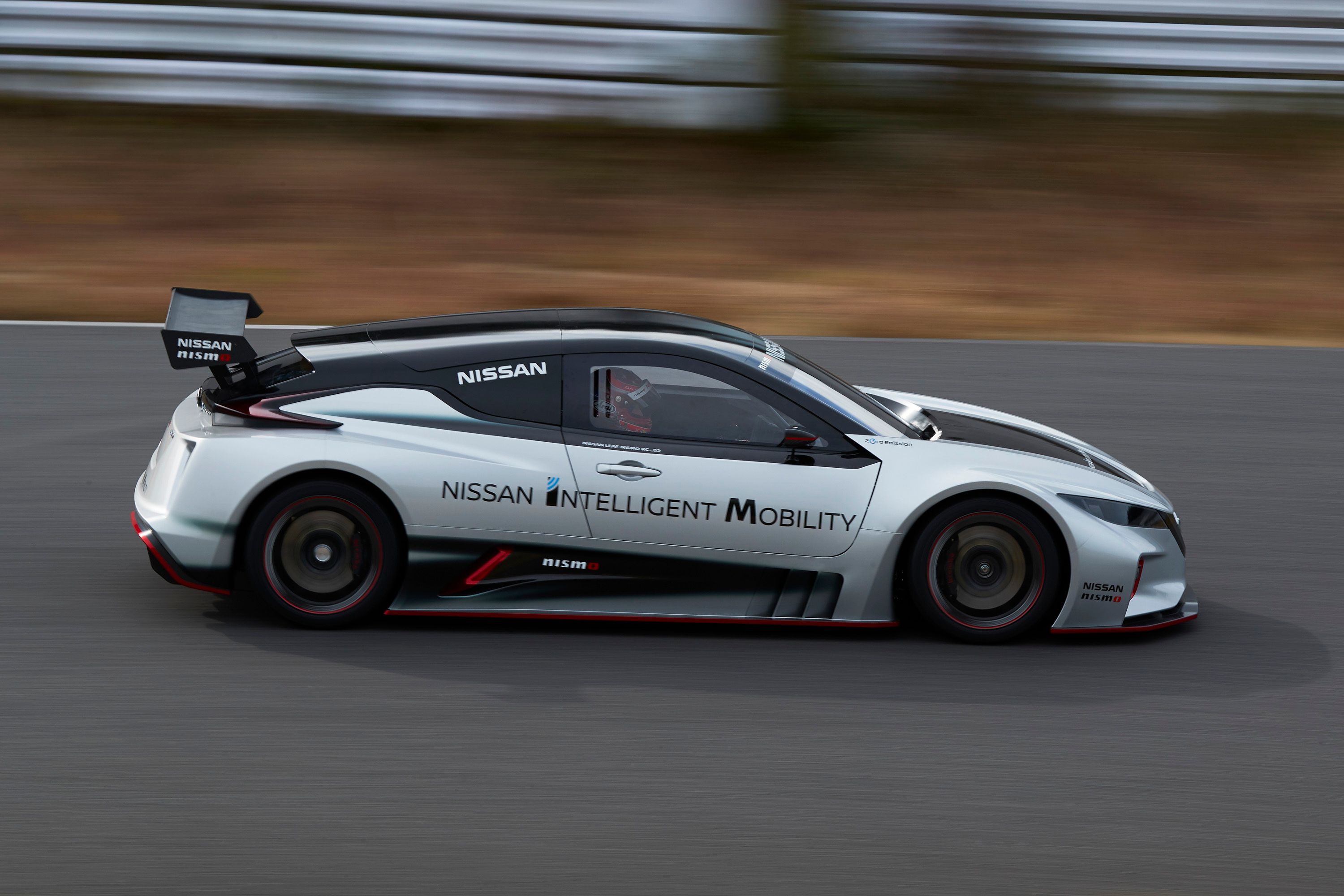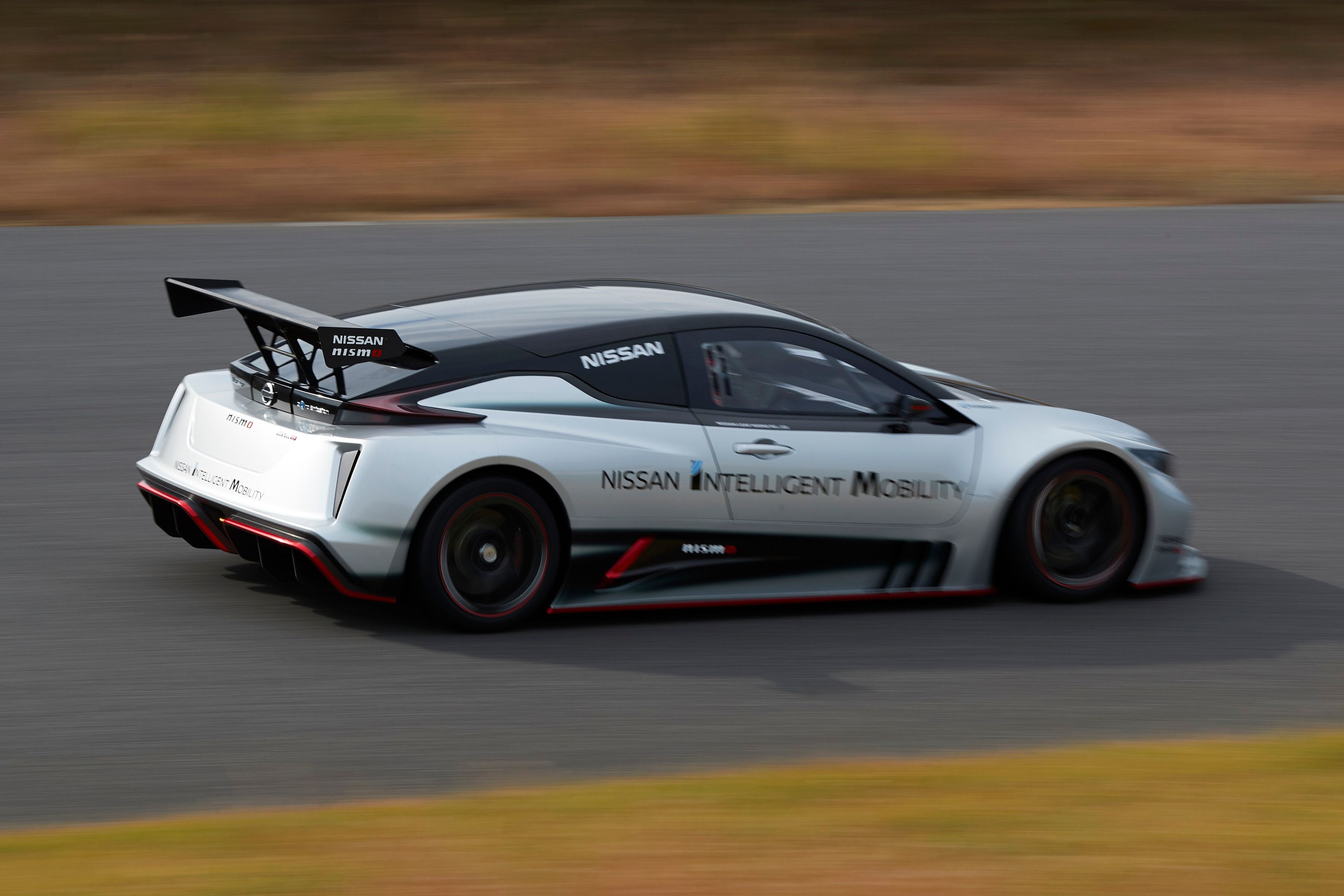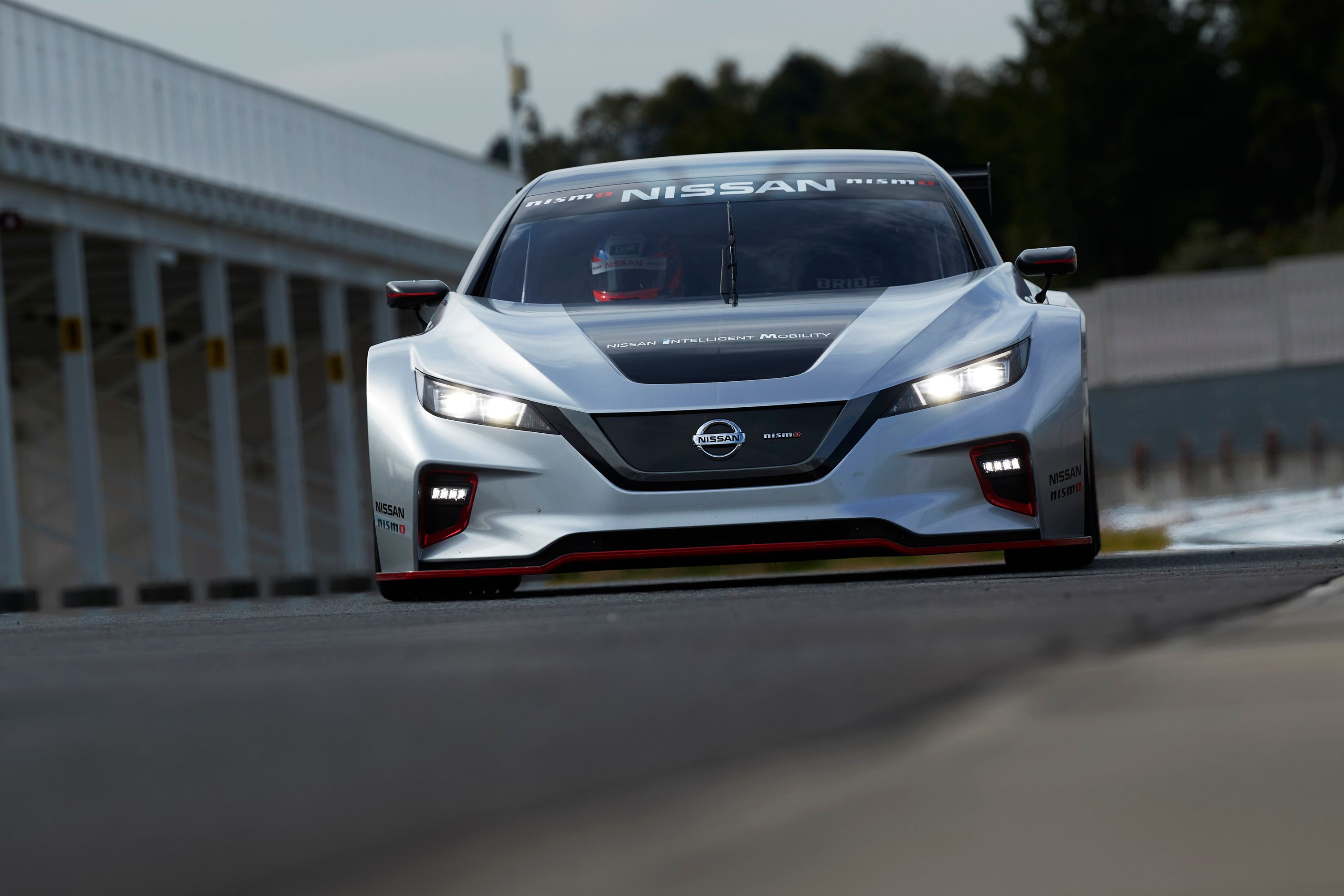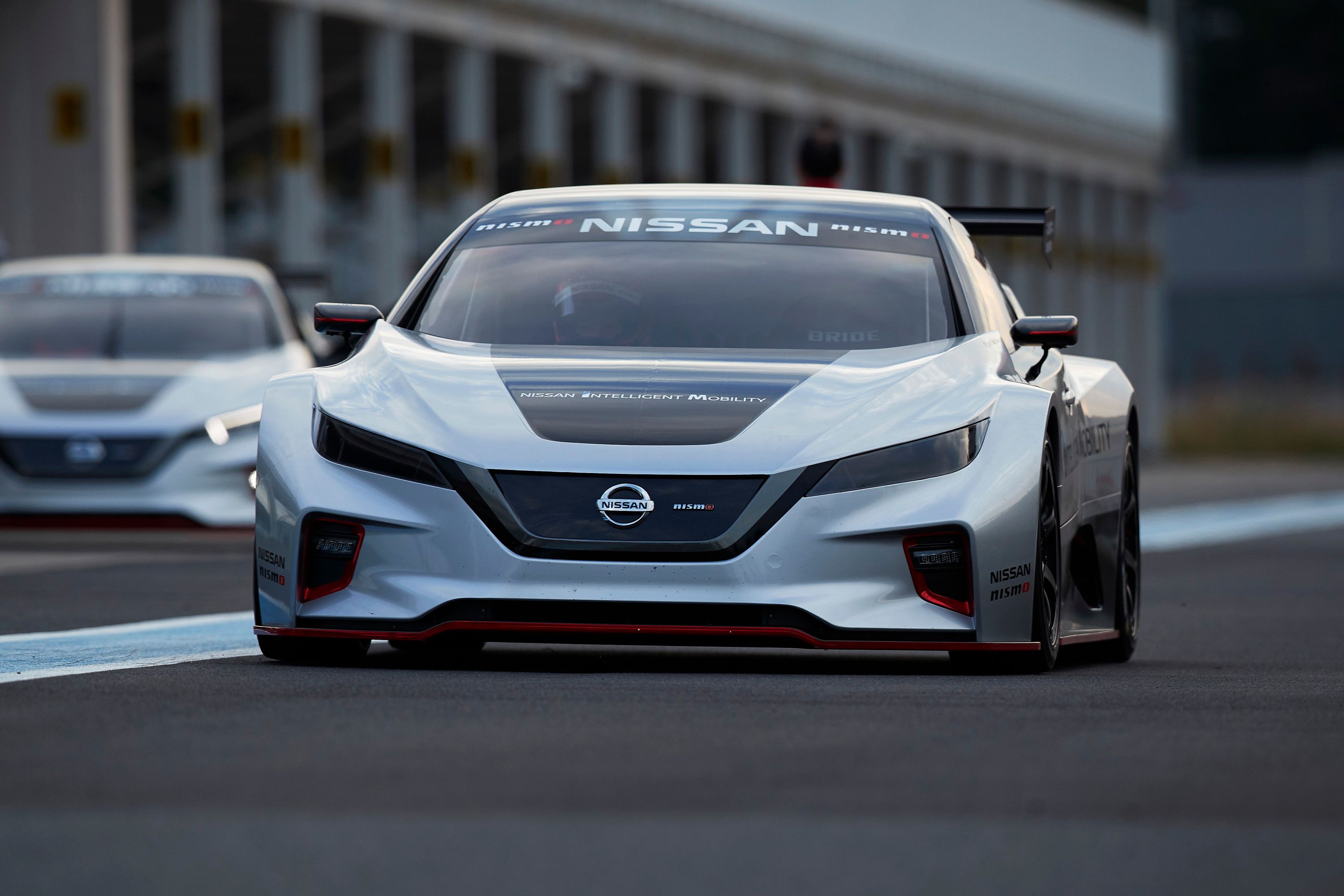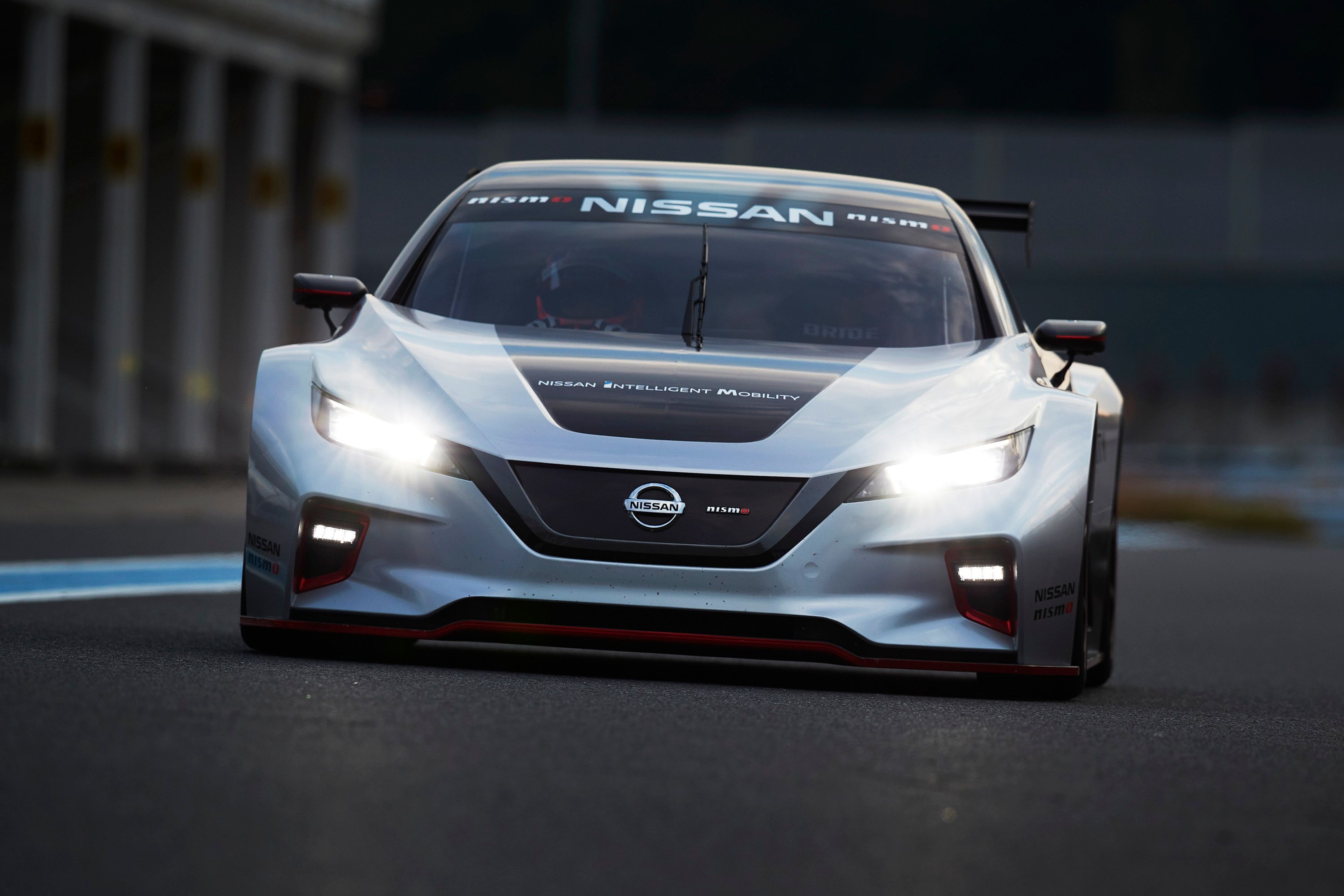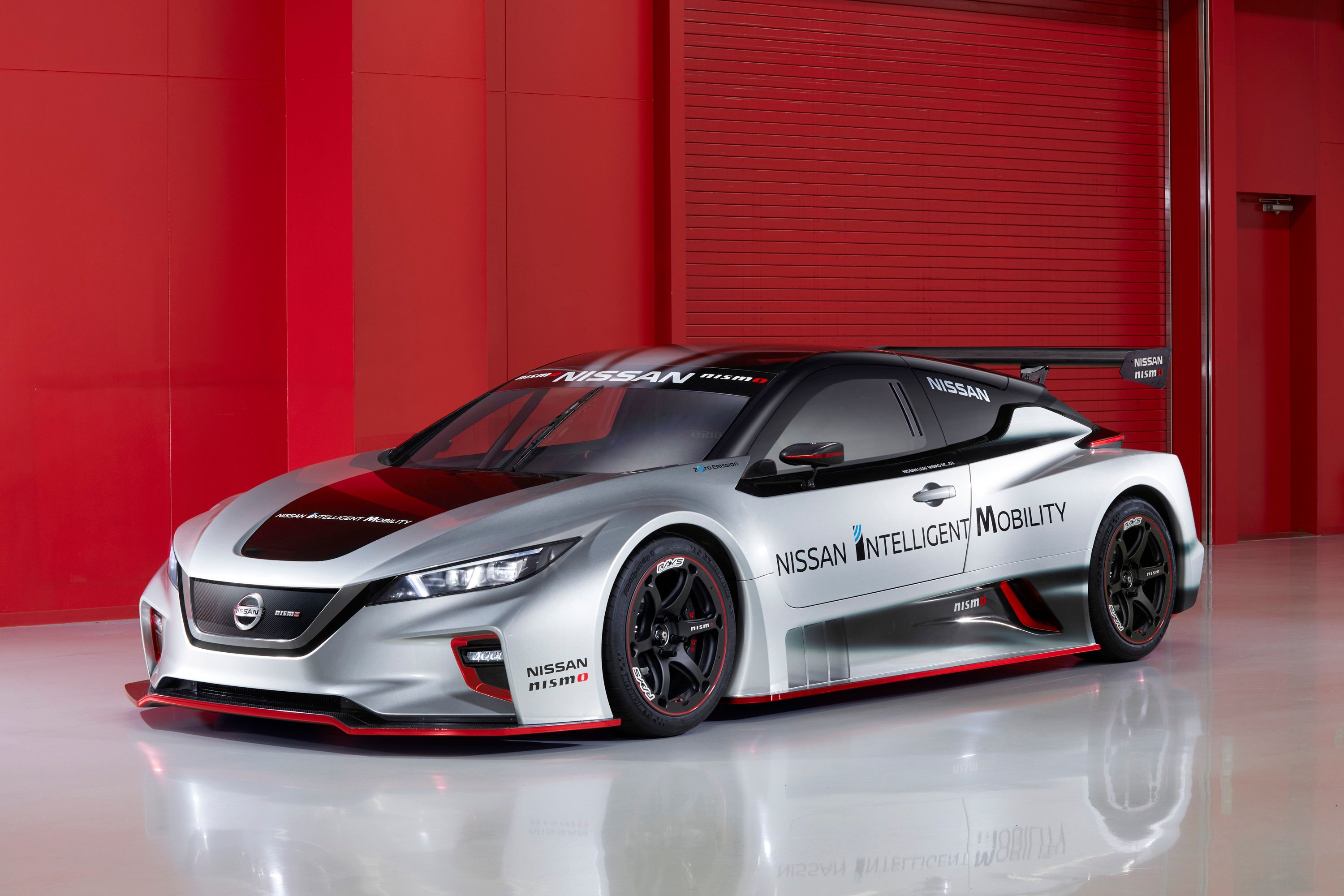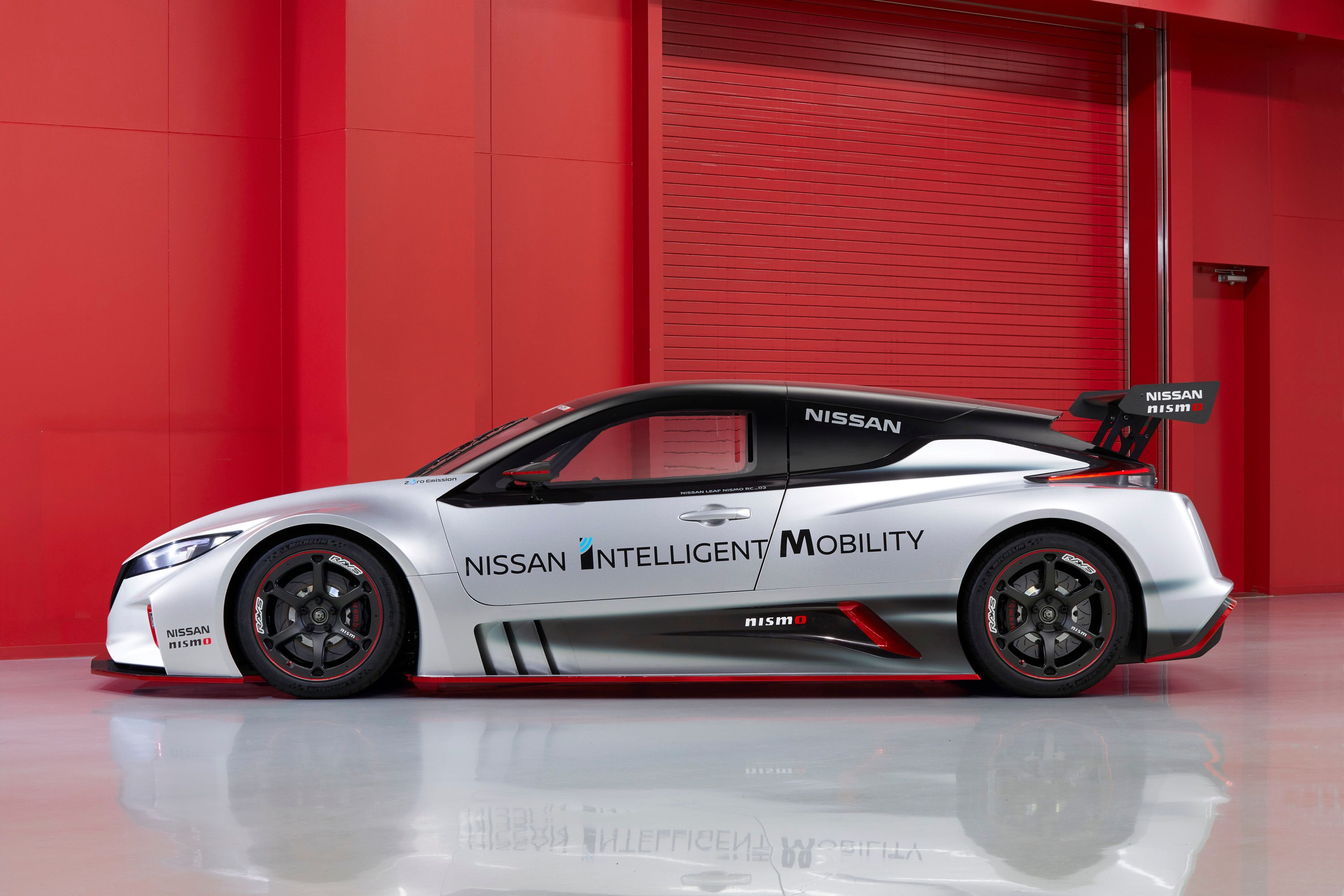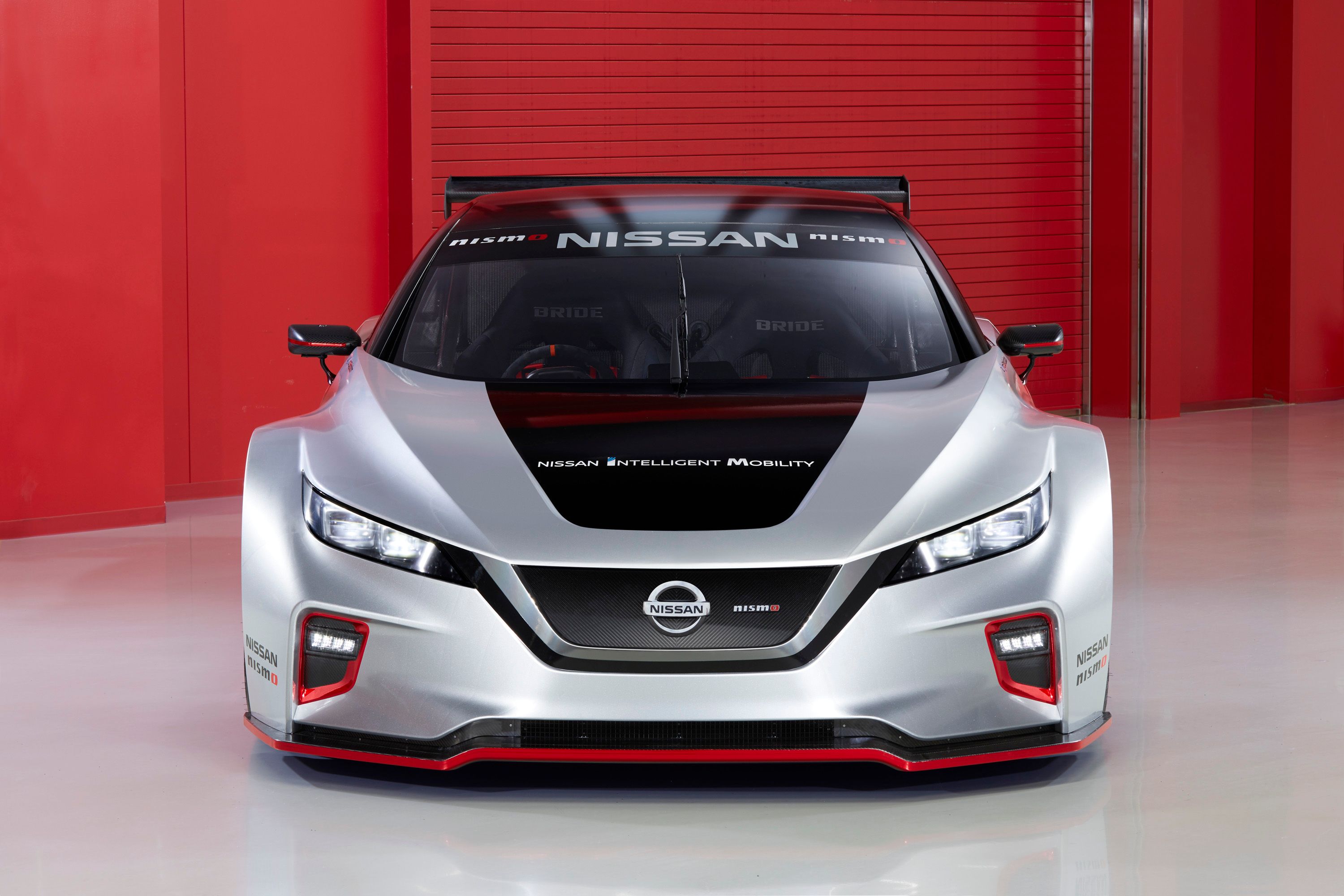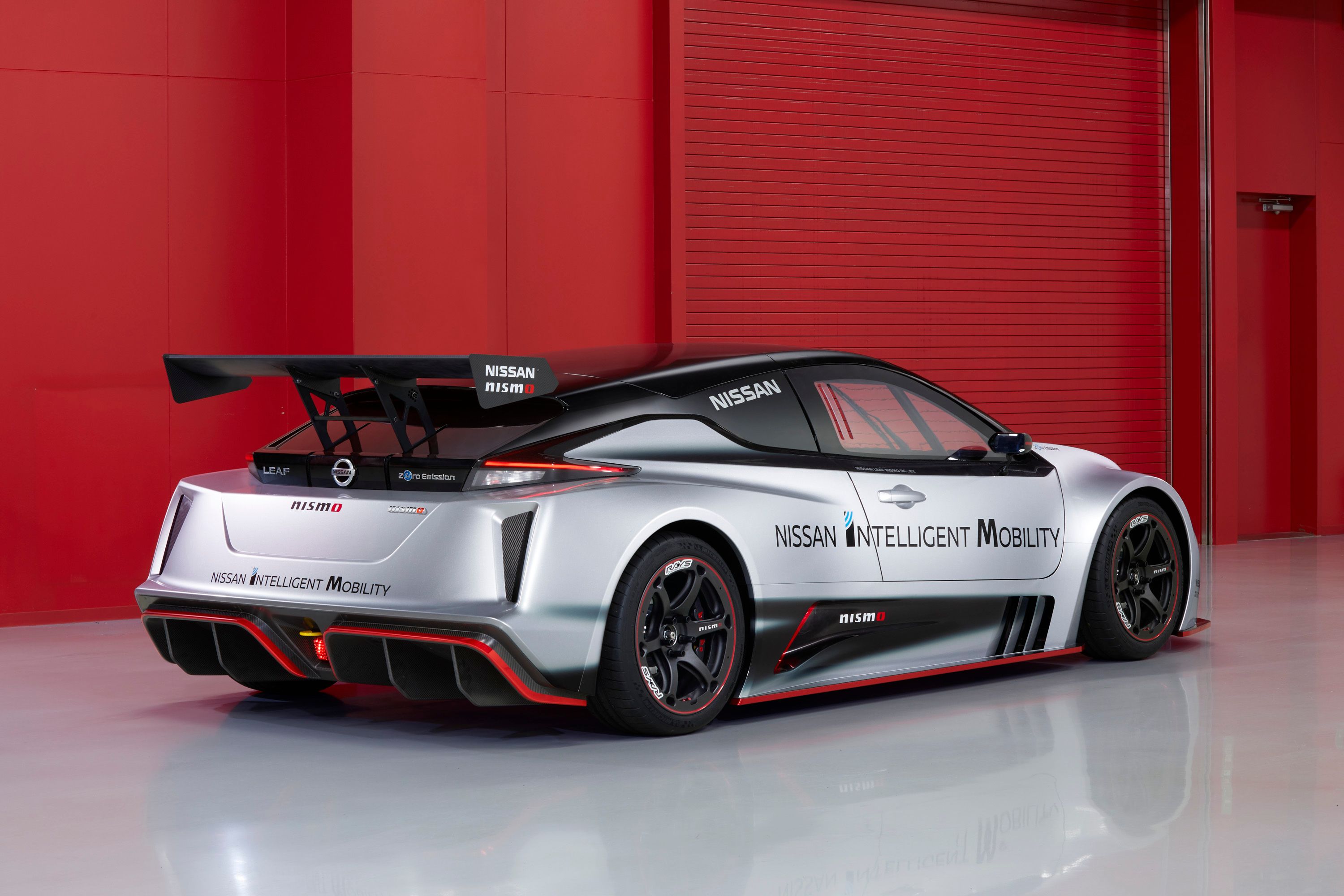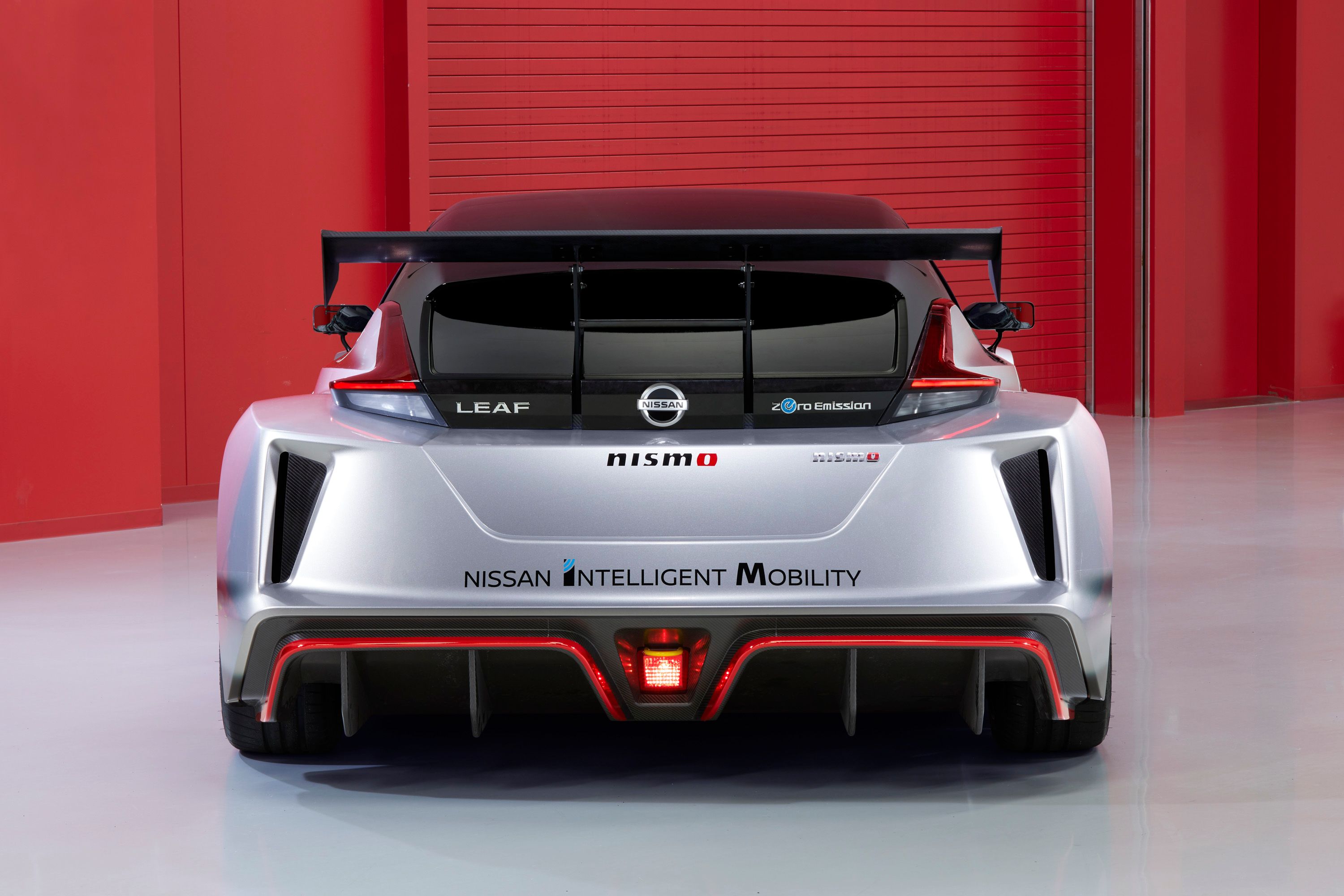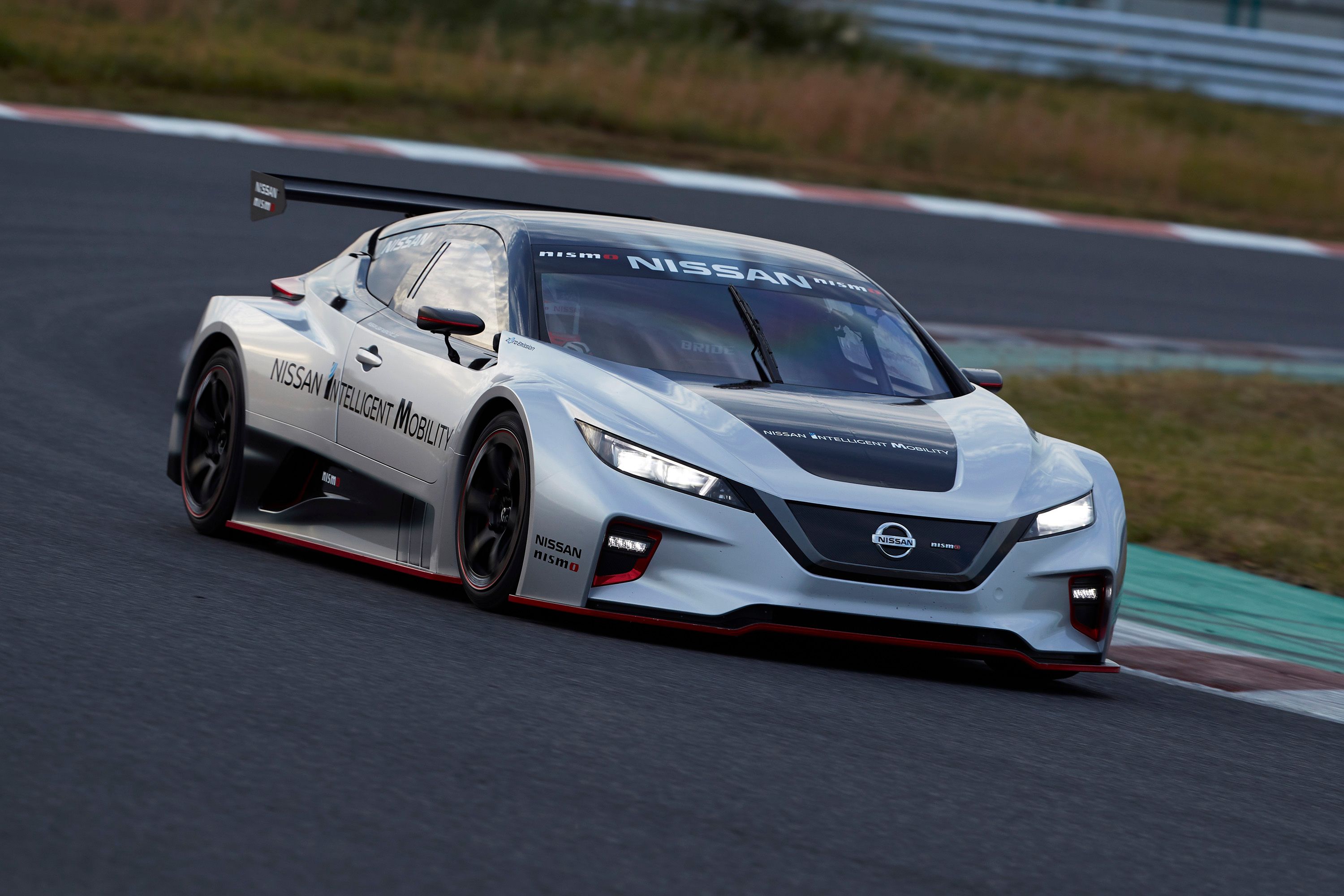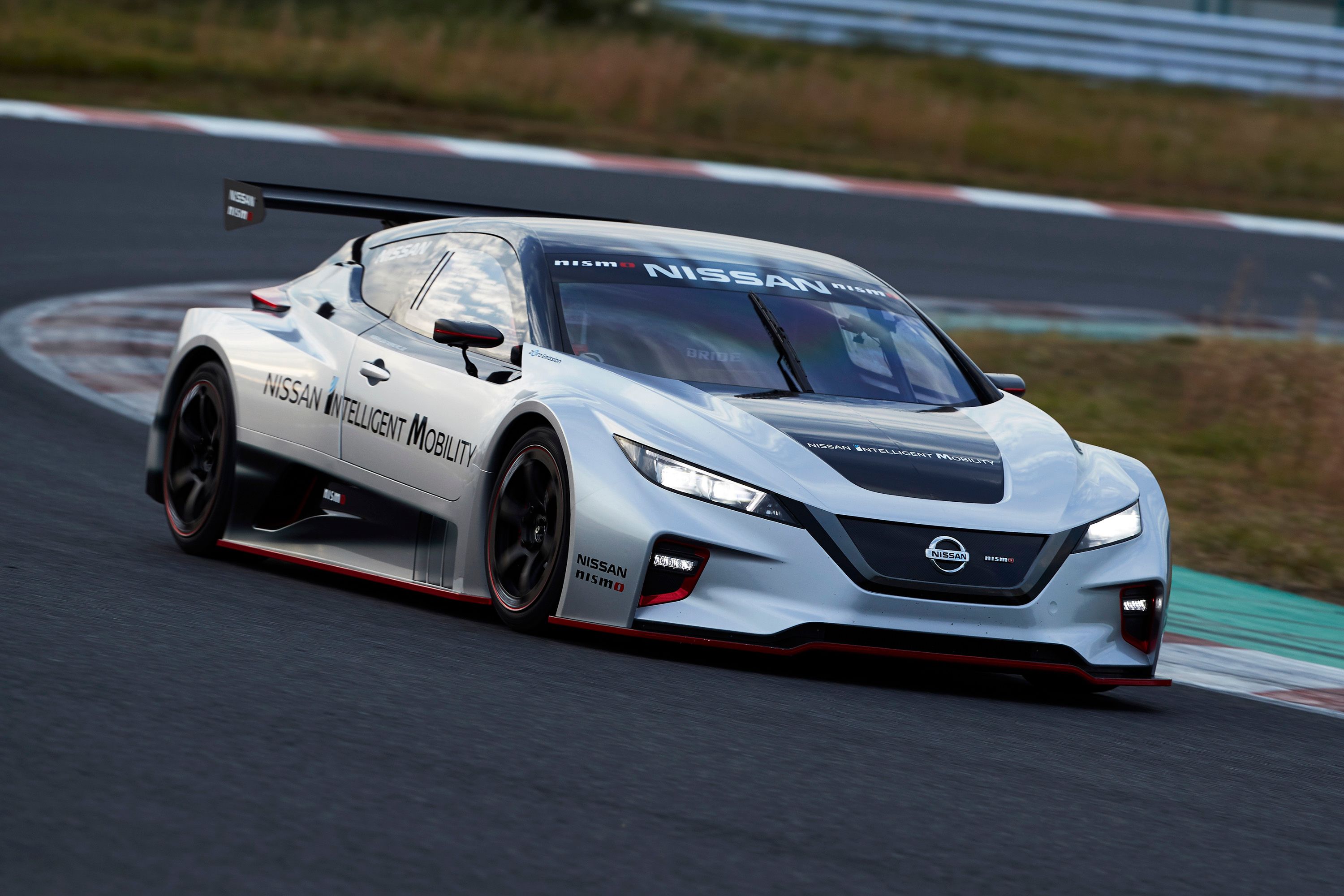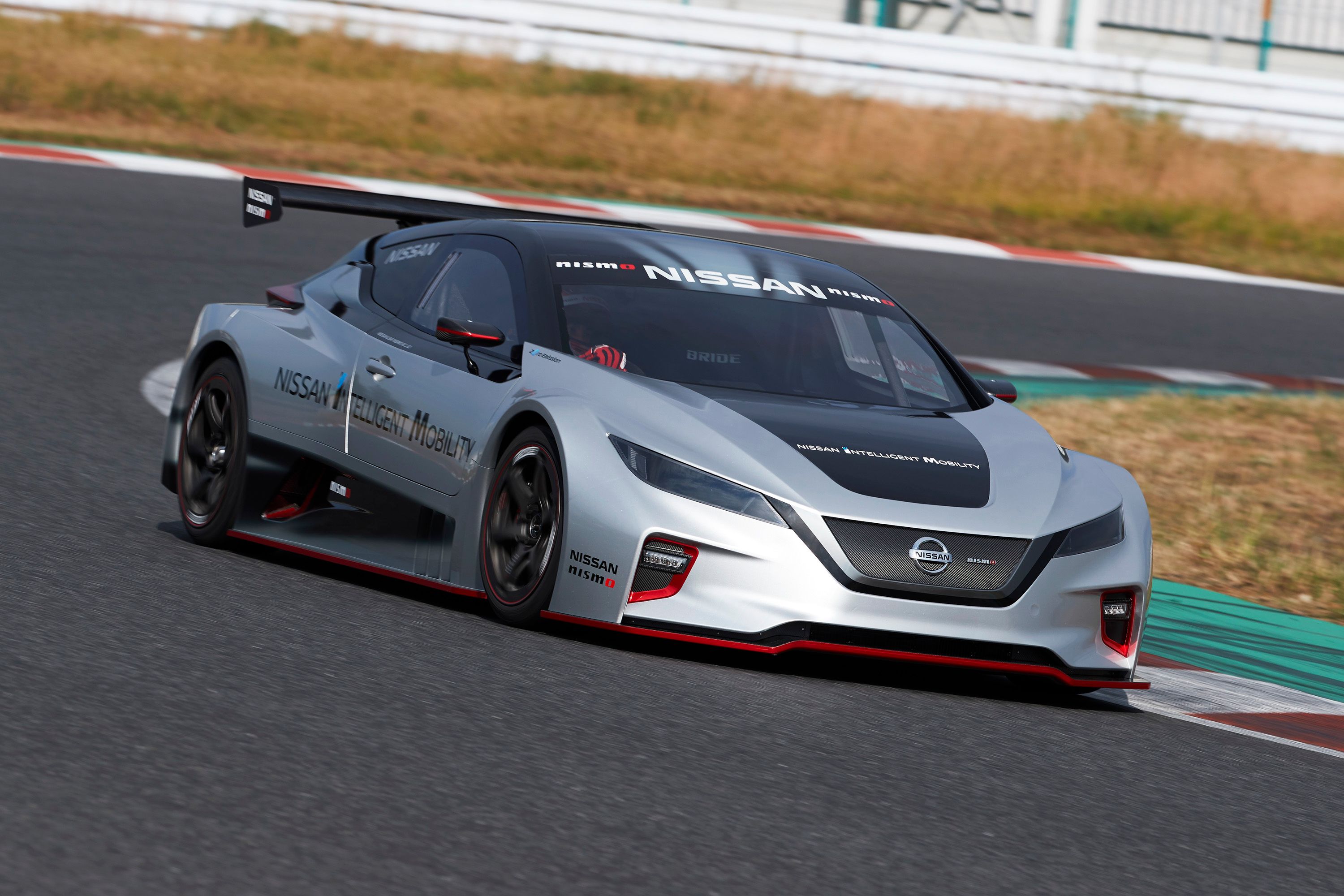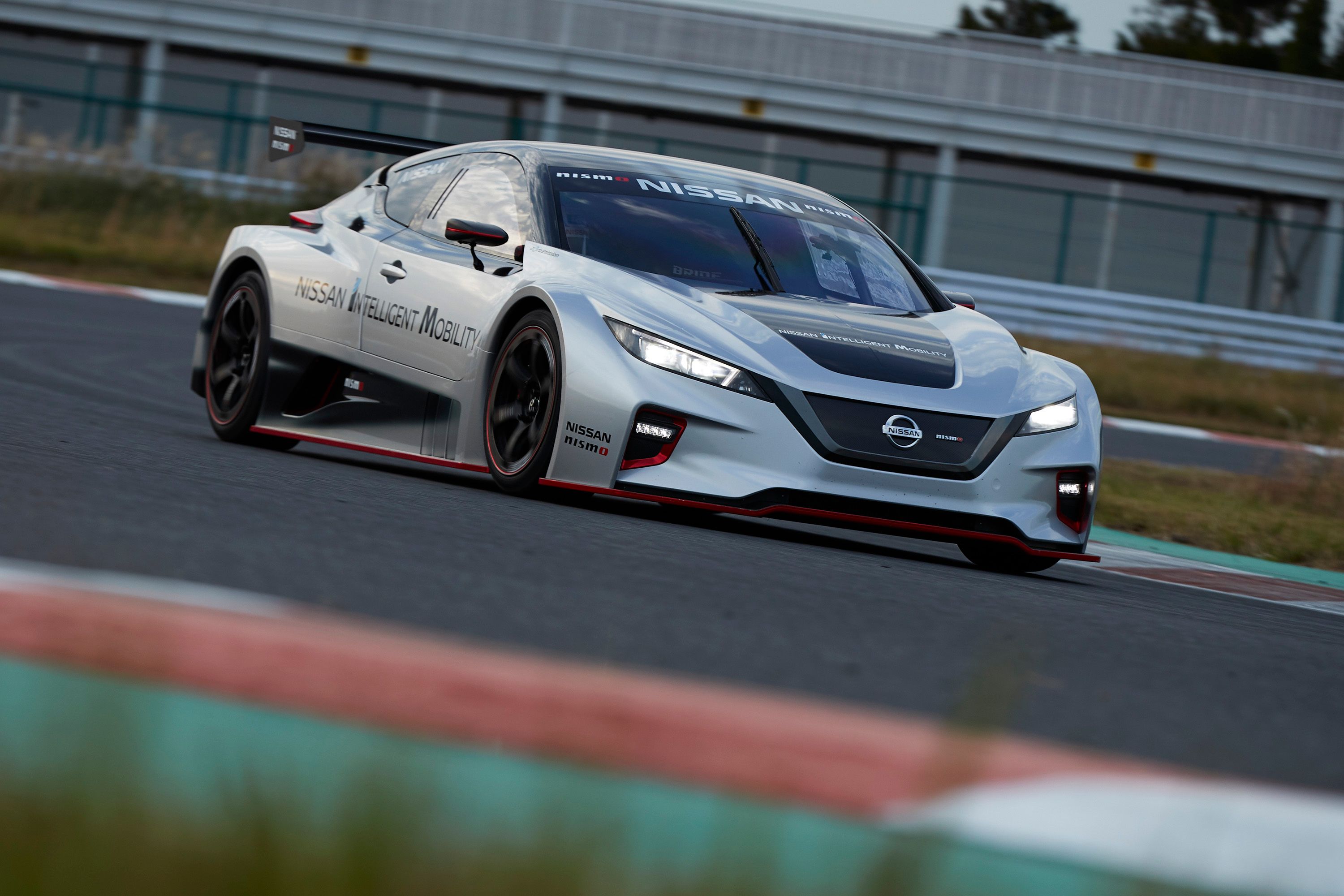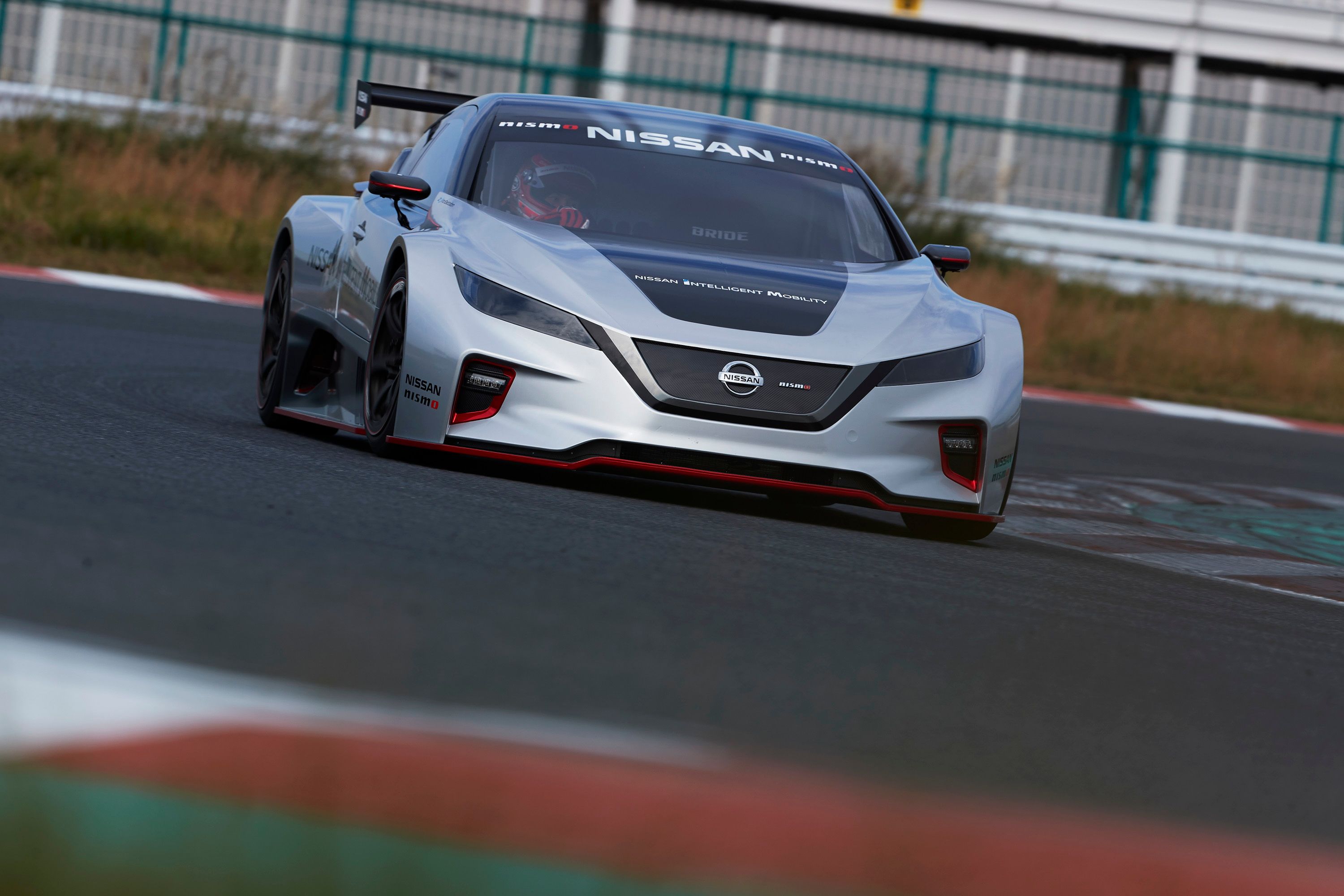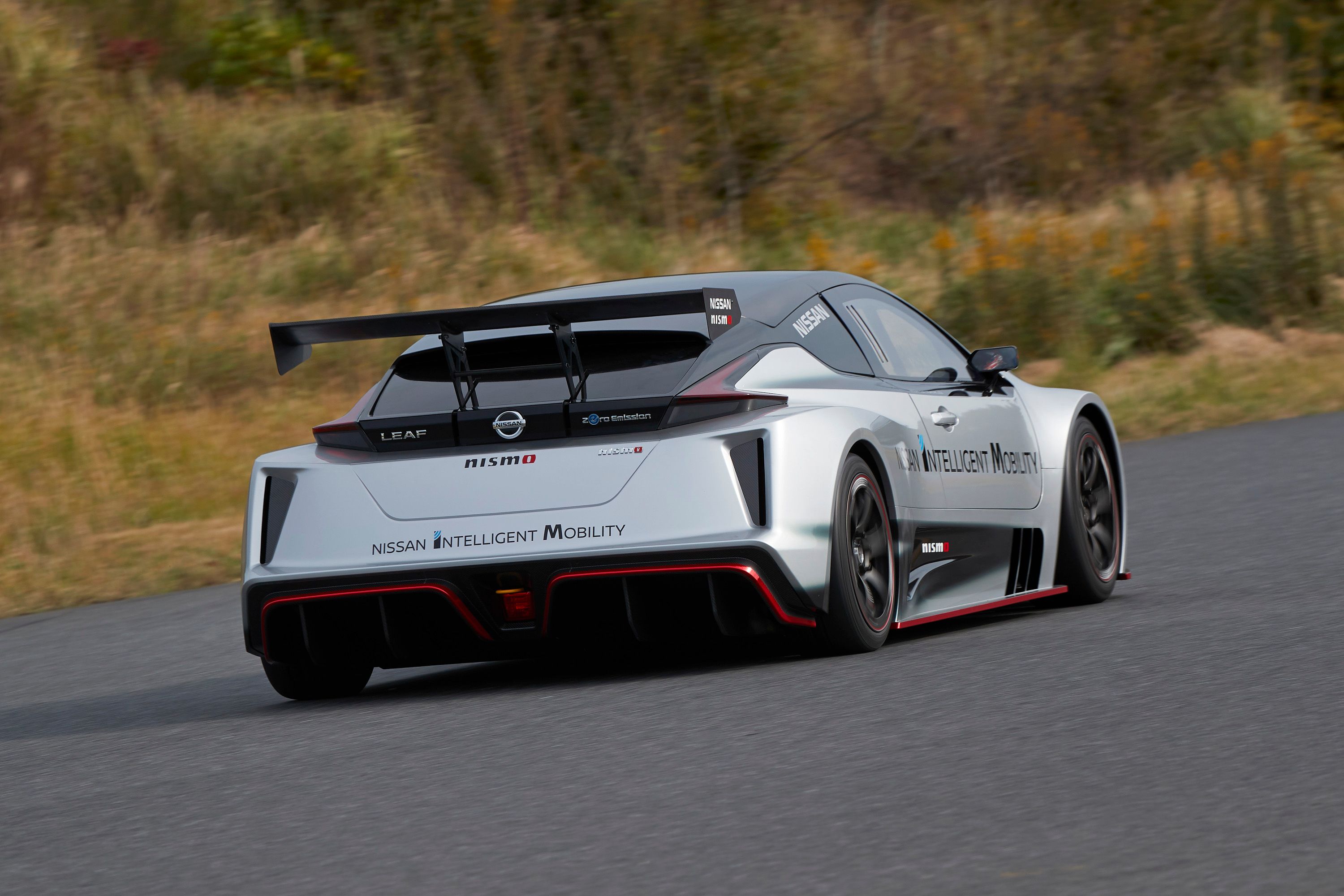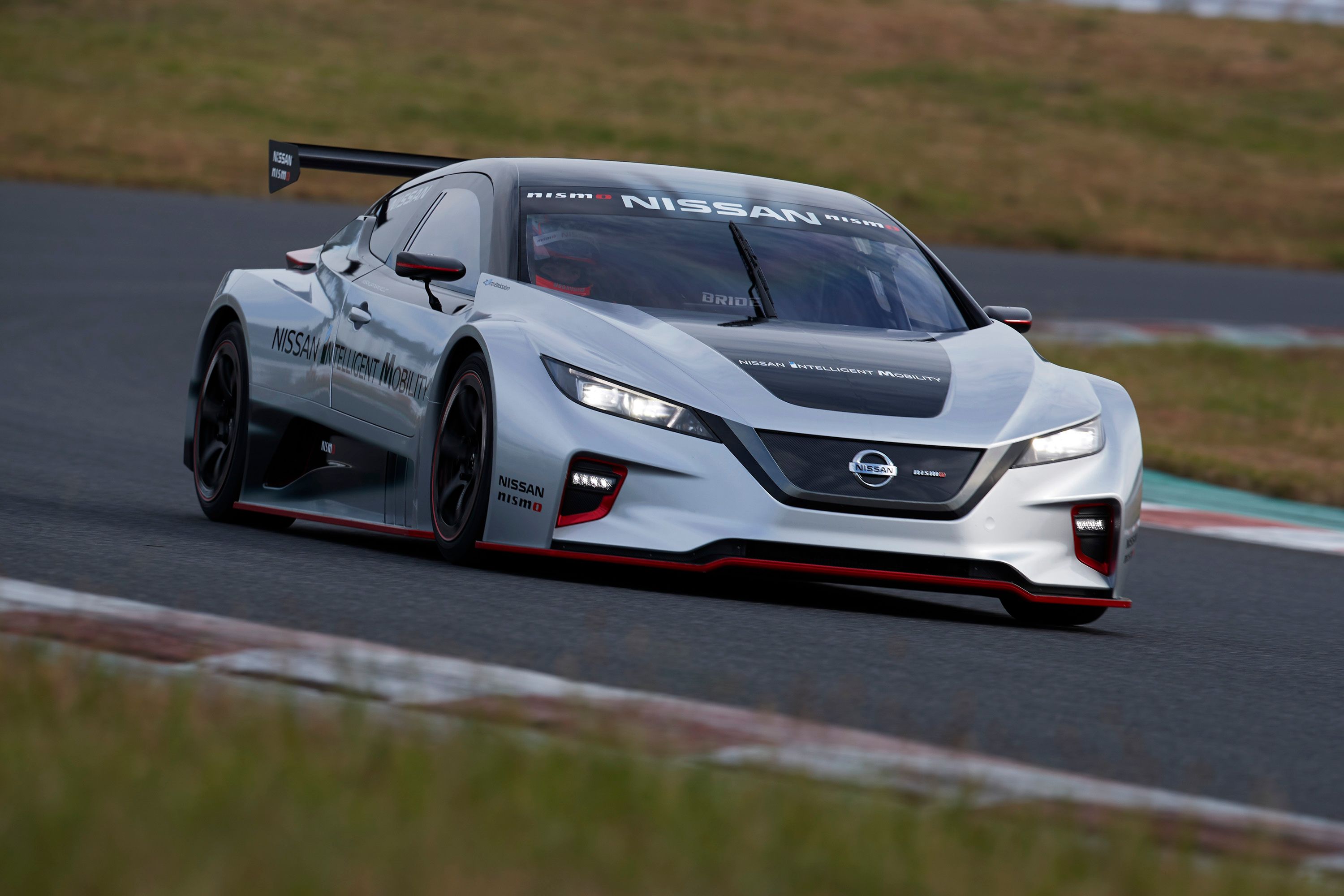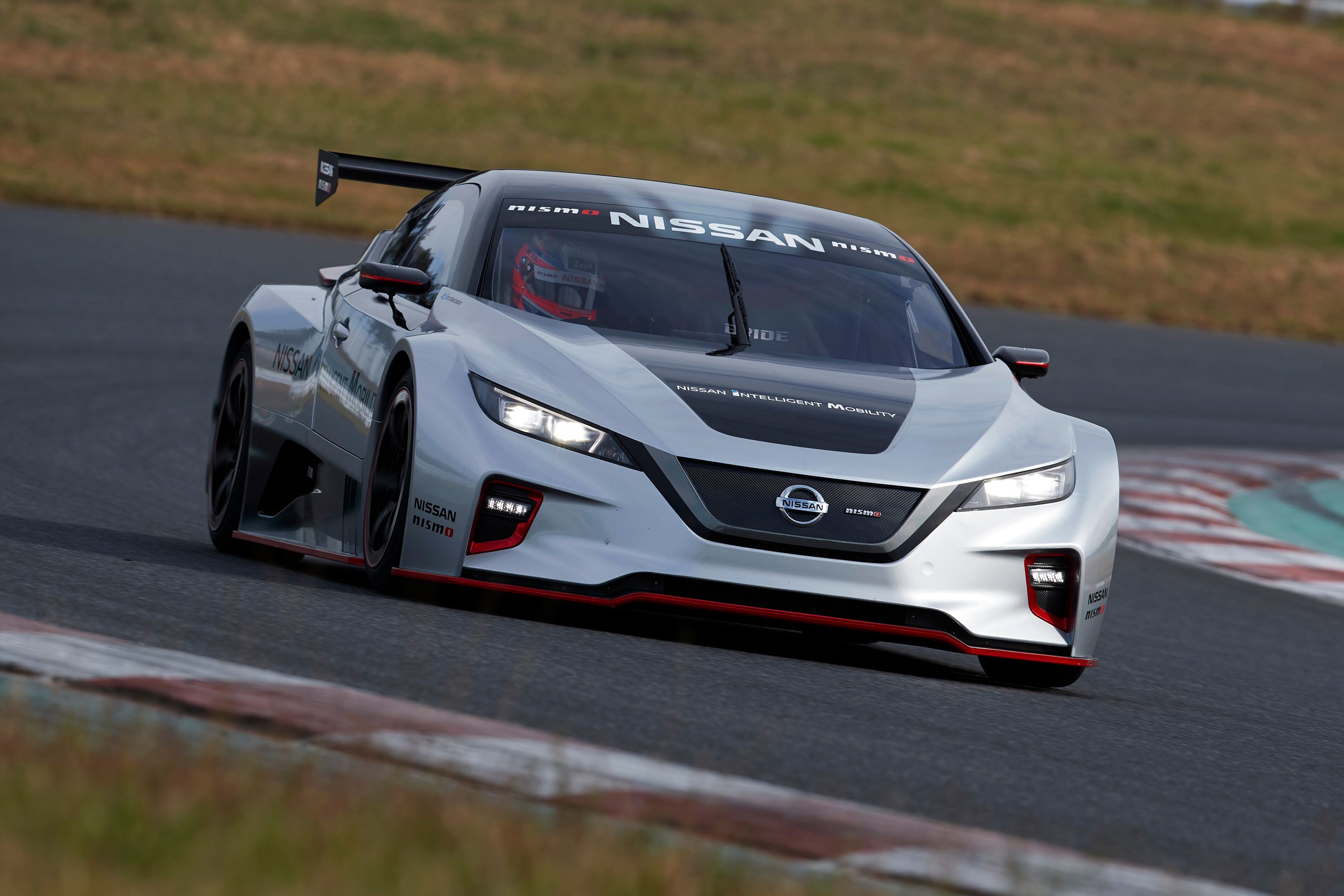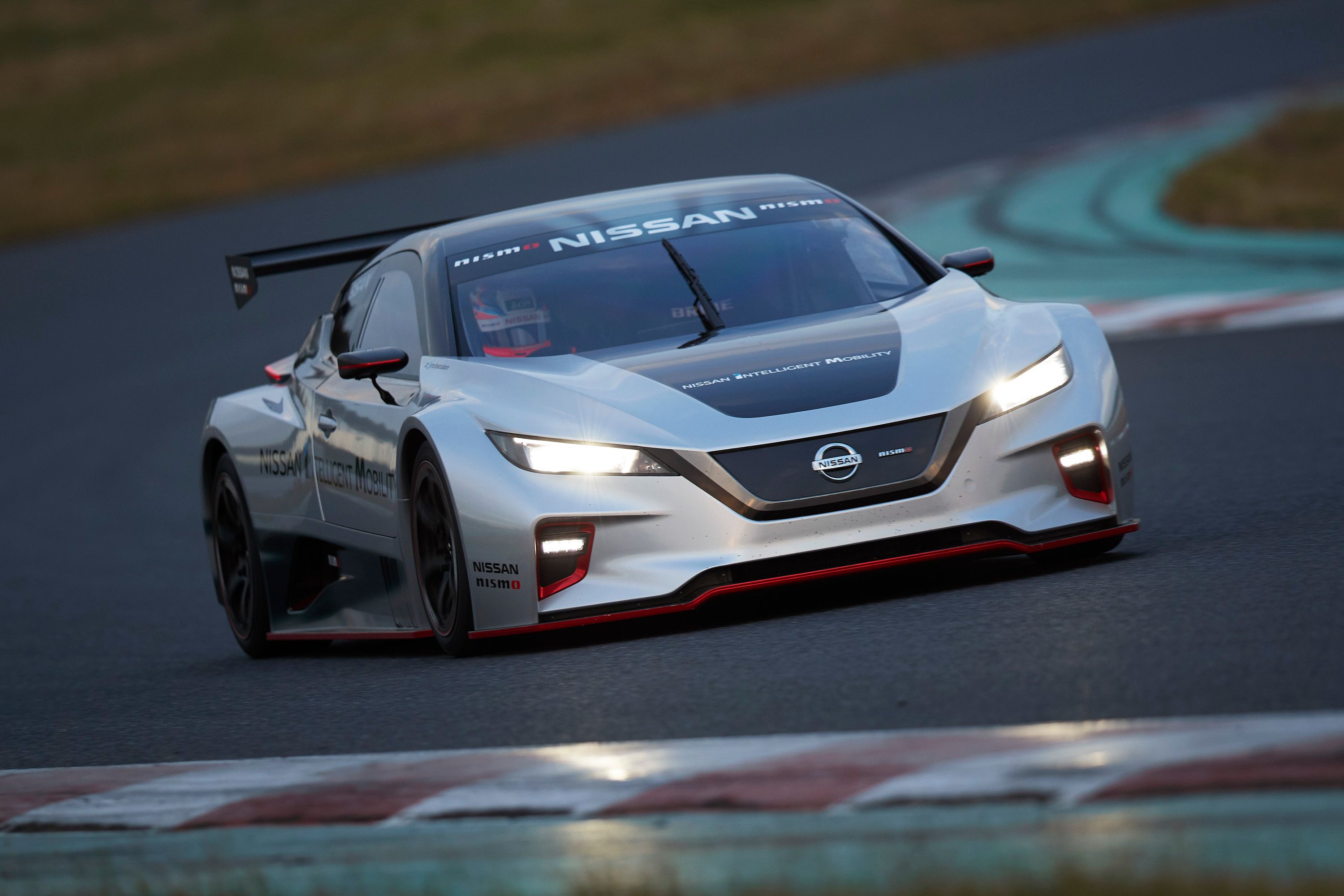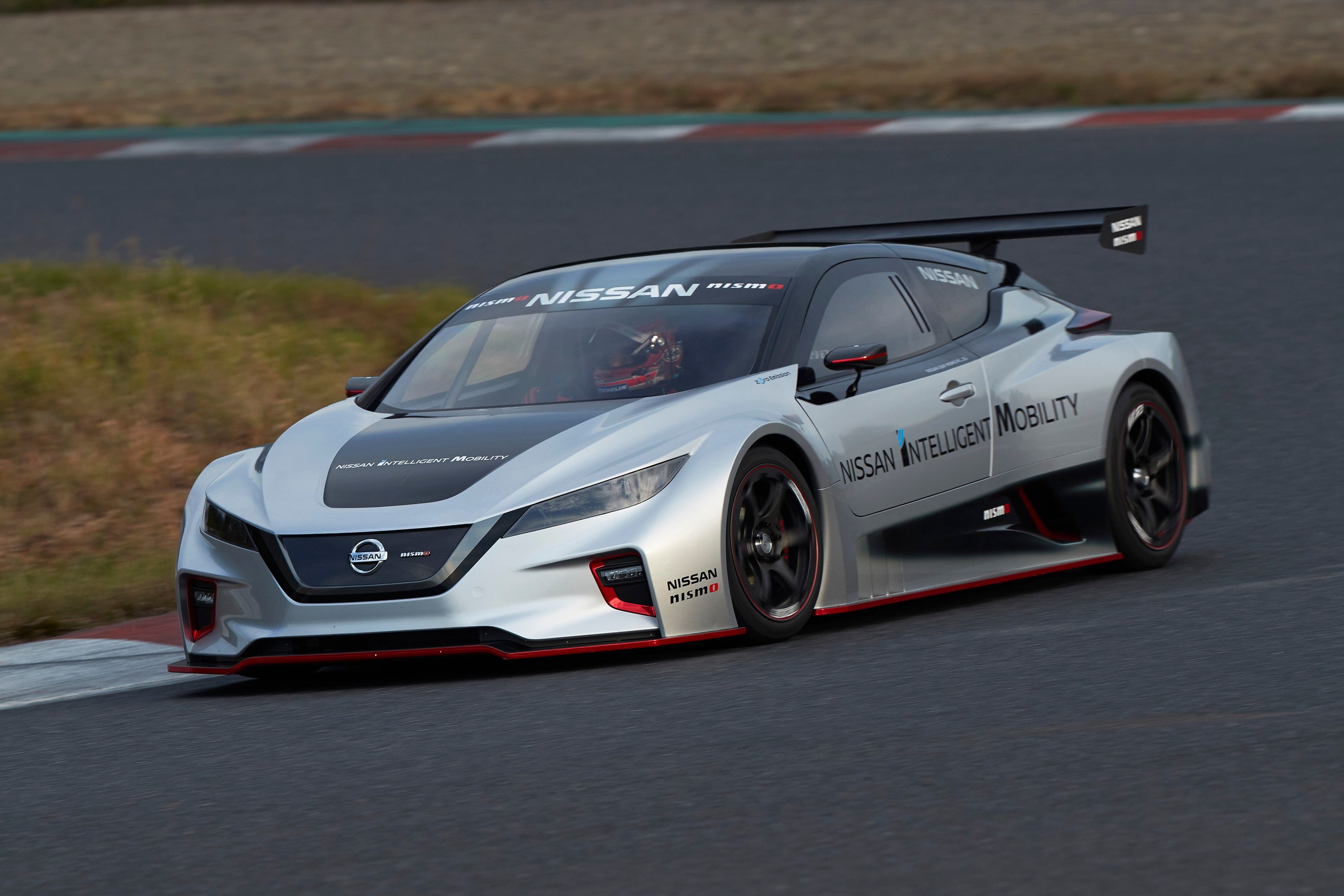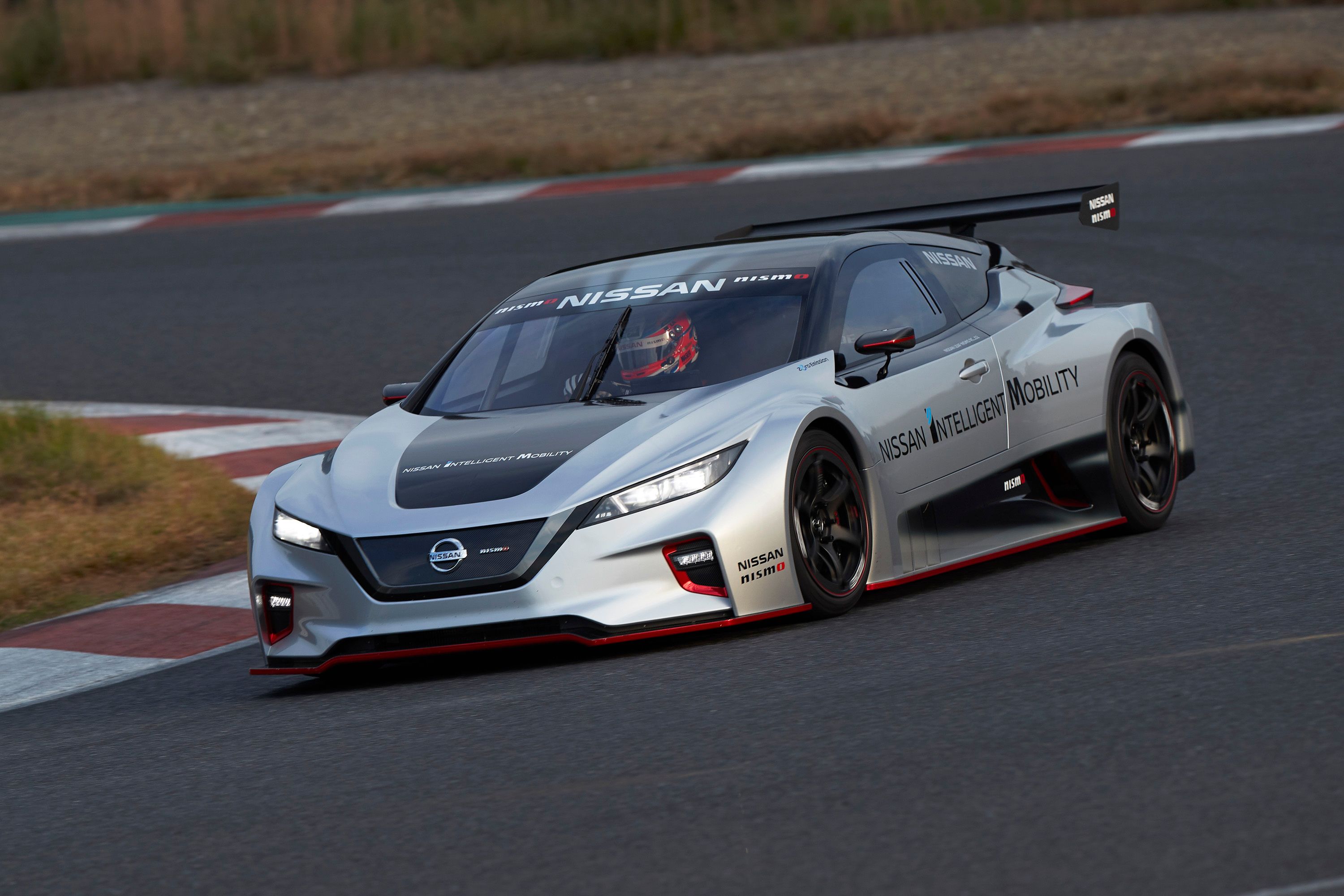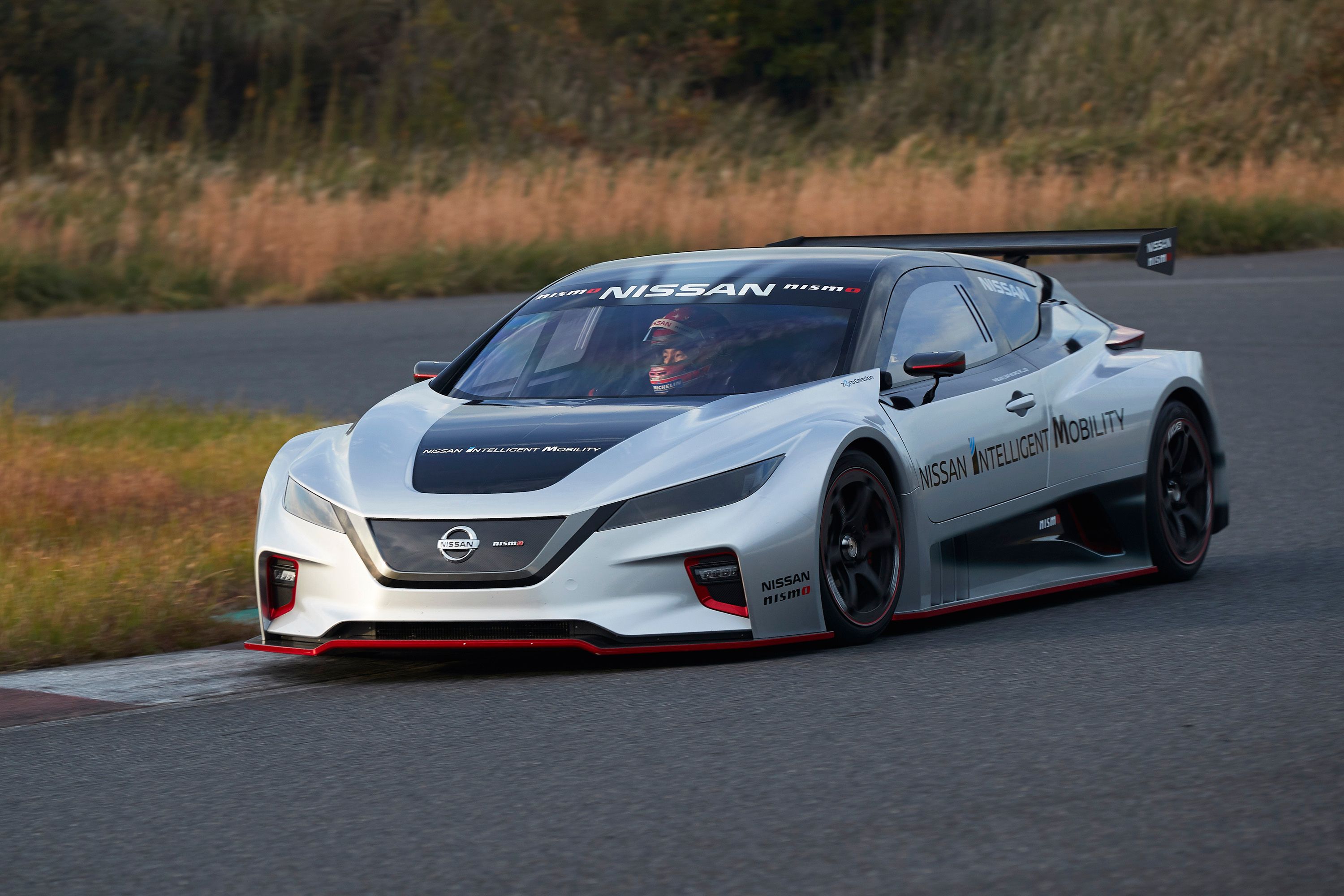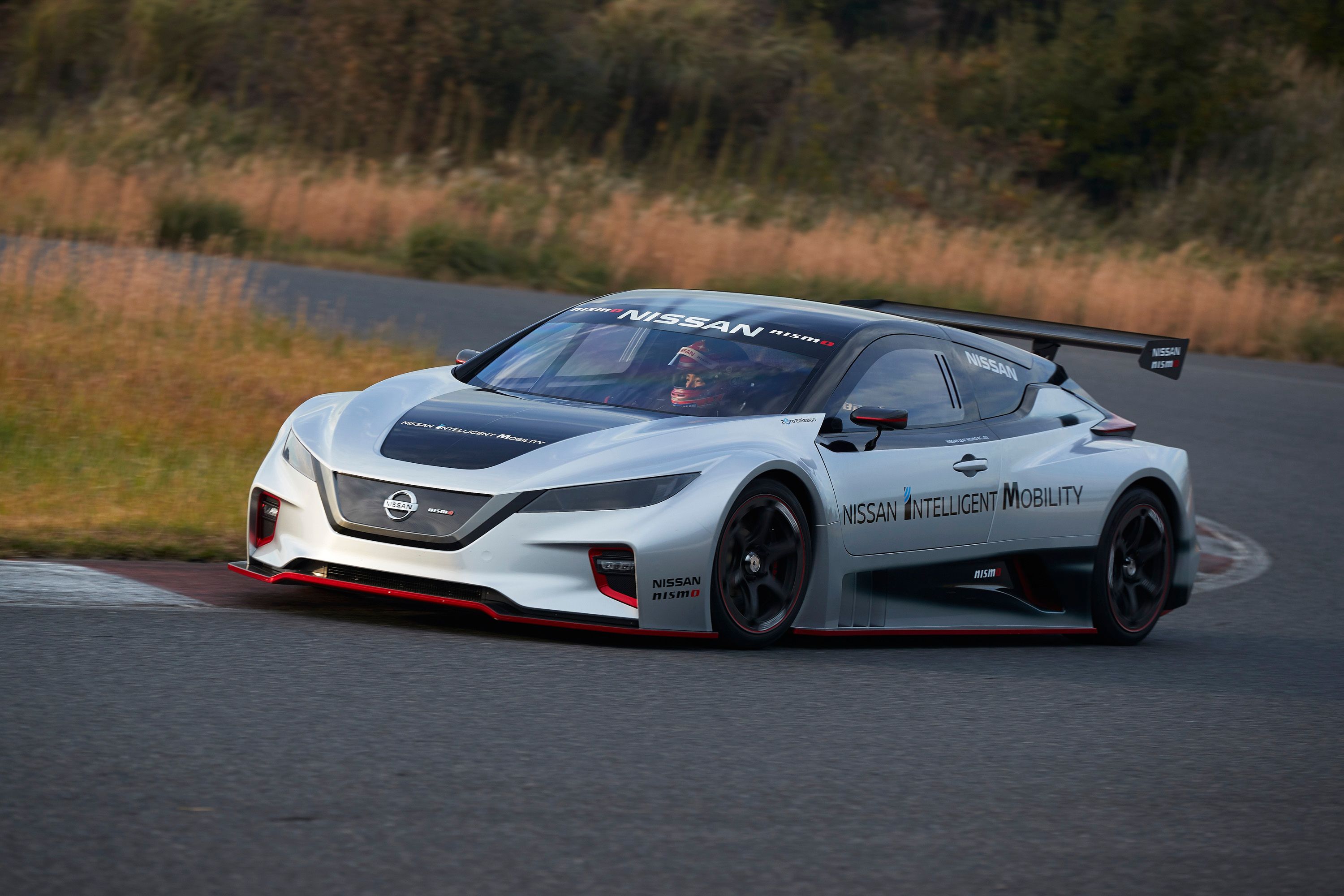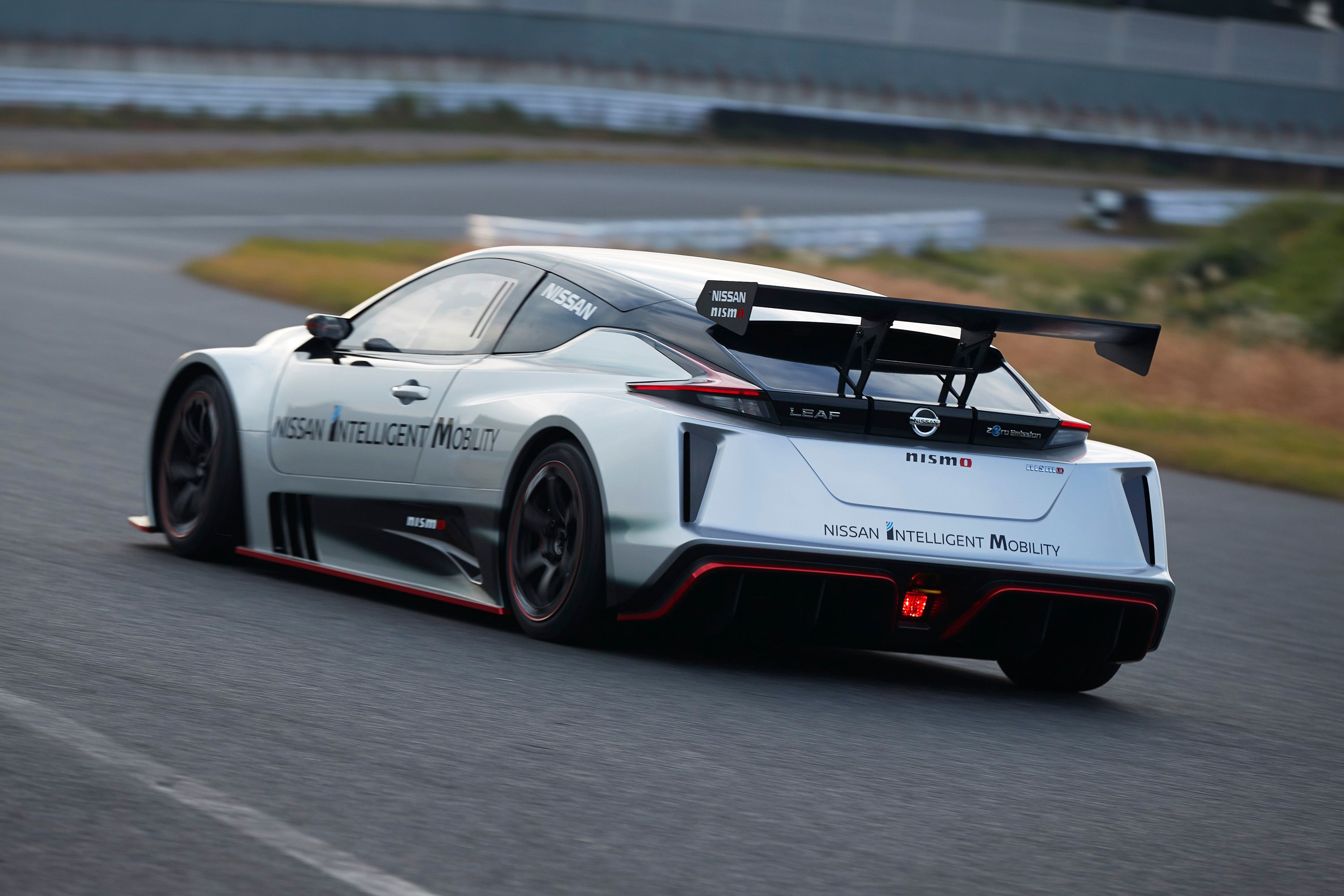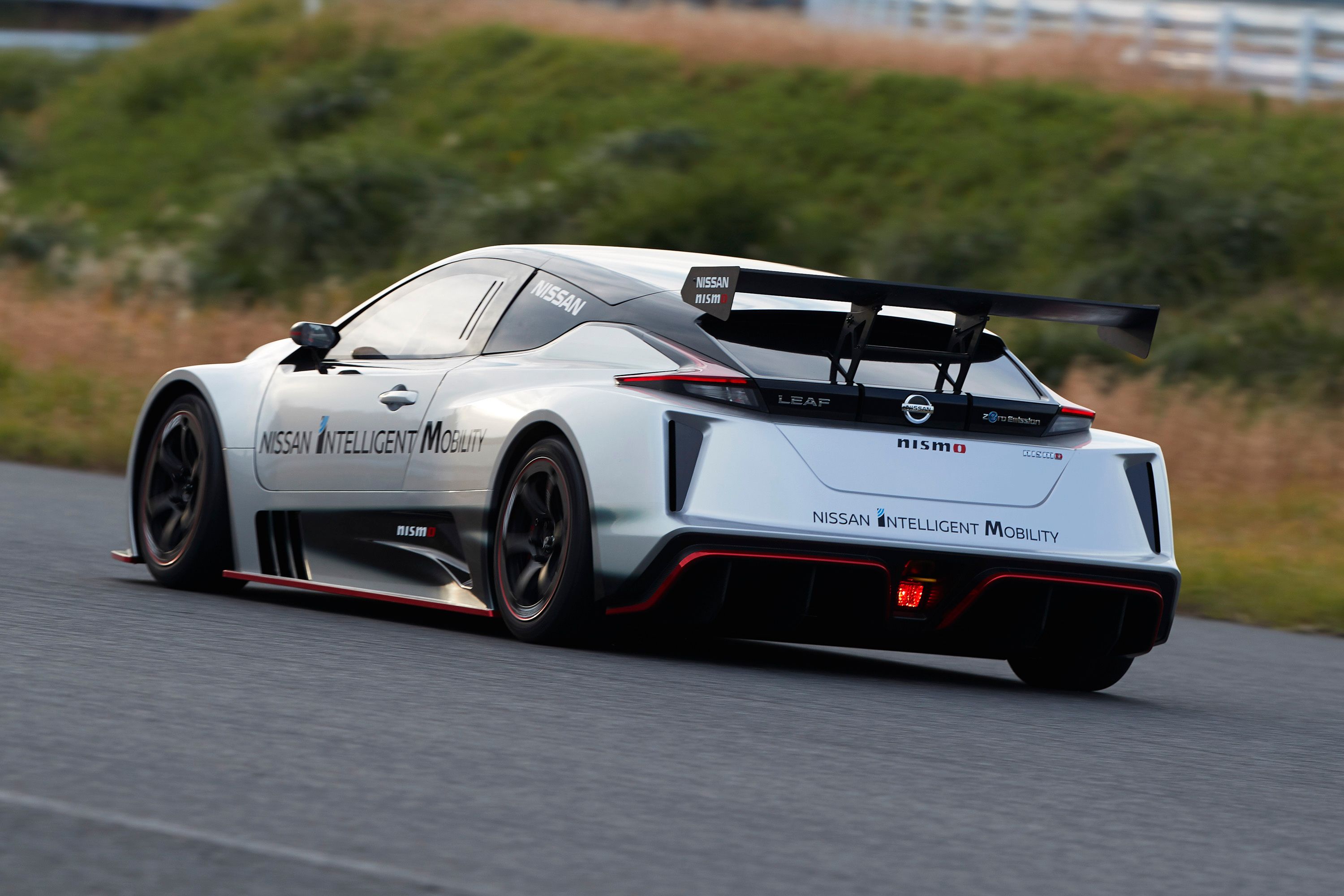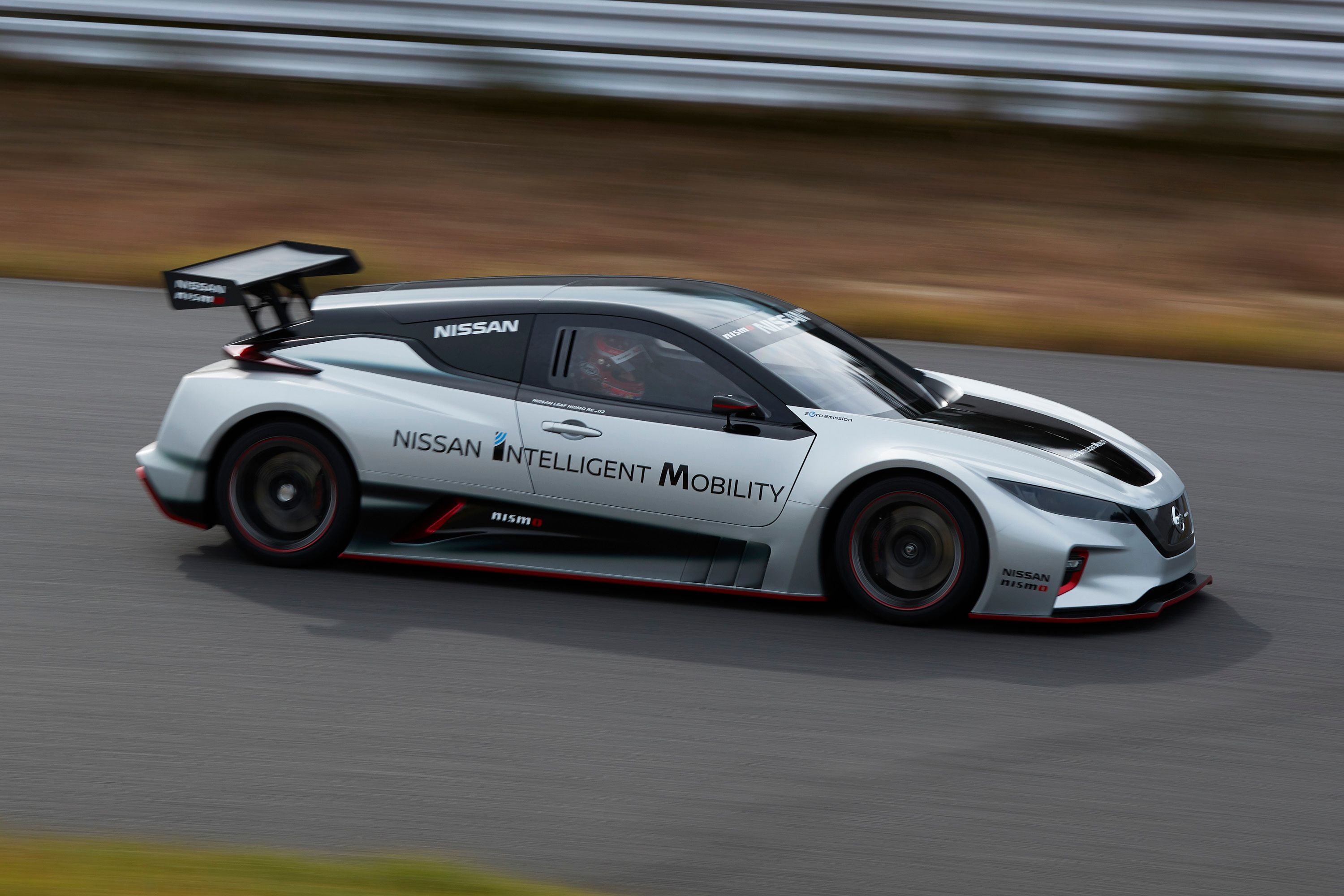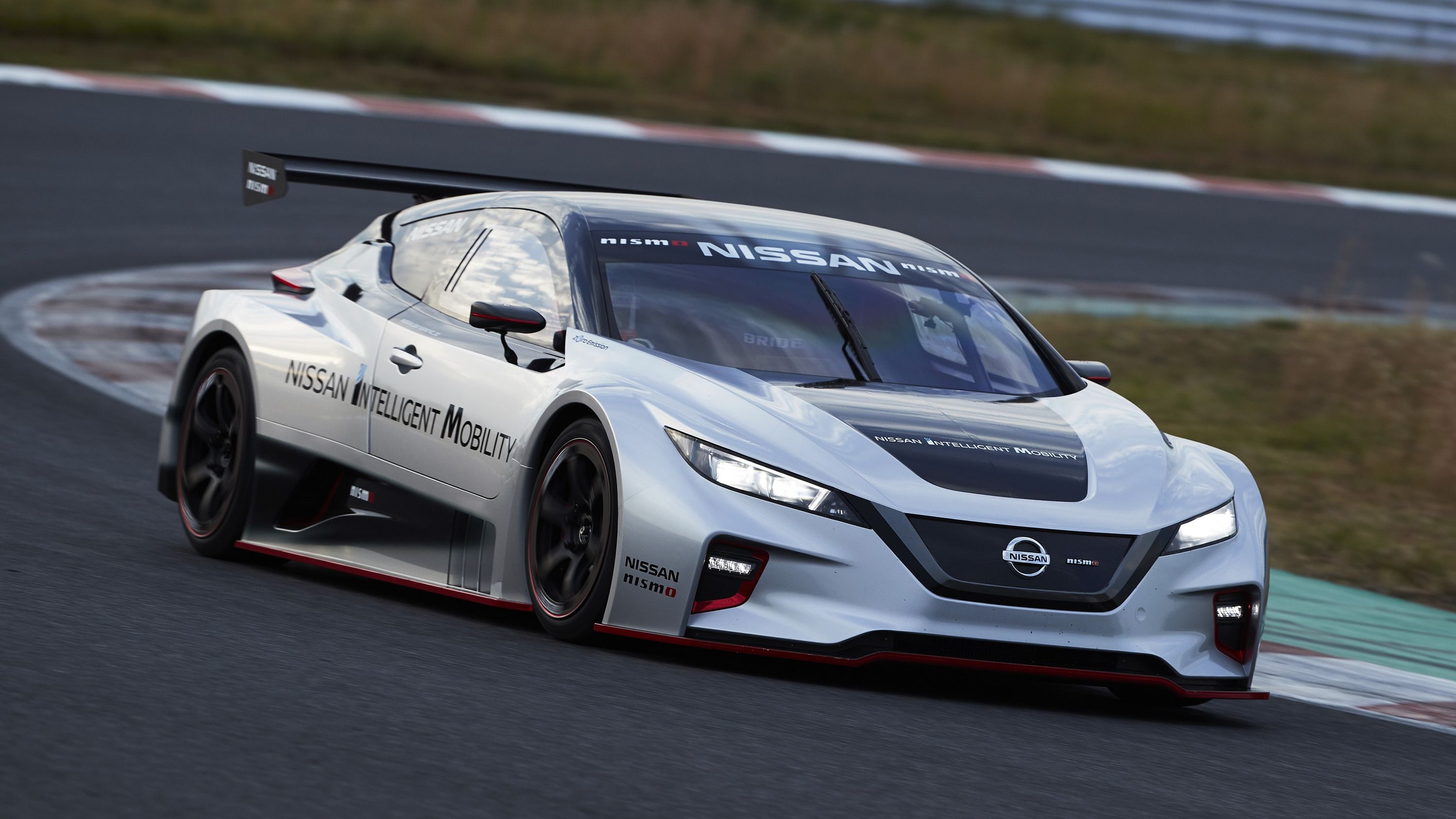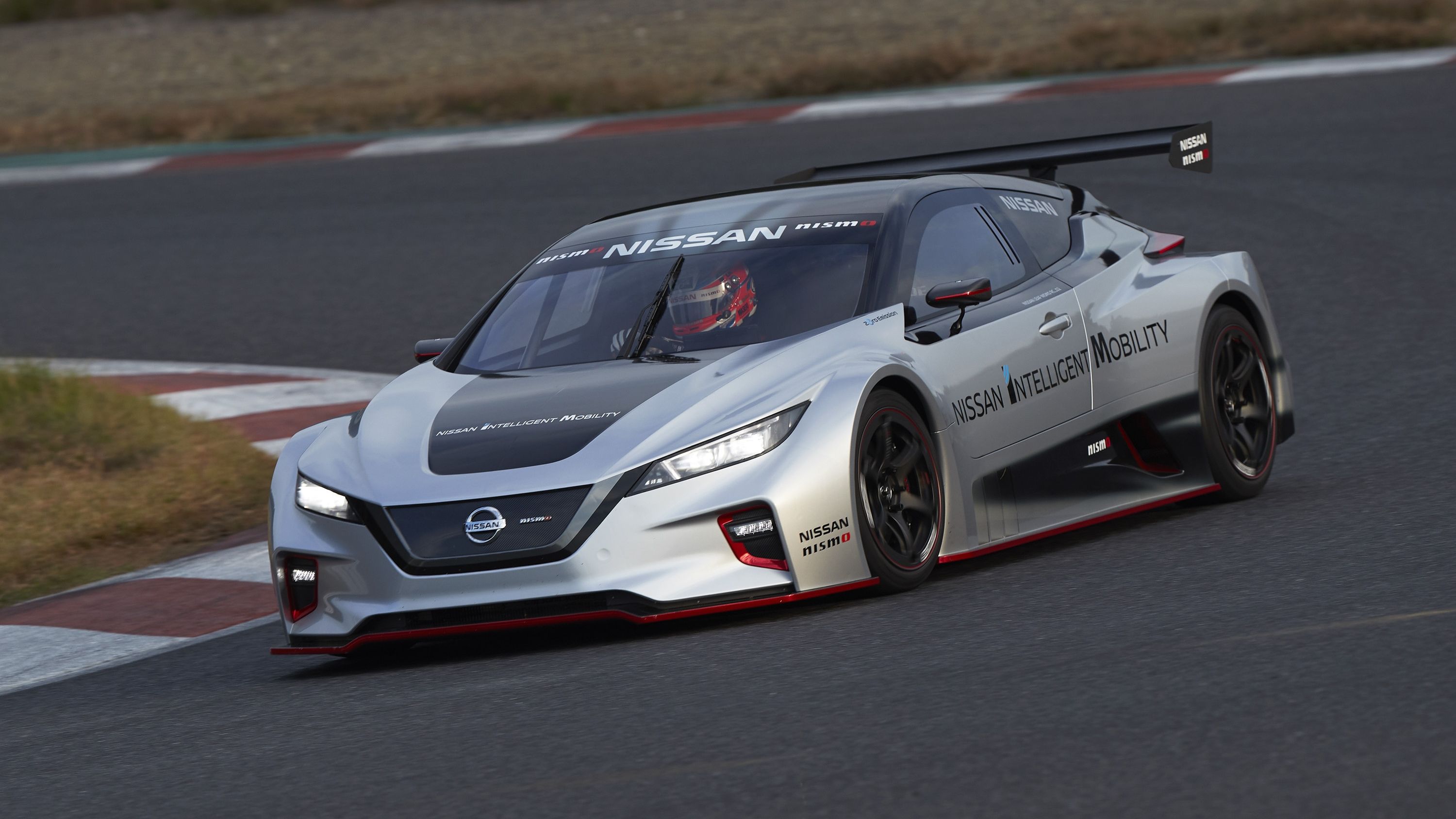The new Nissan Leaf Nismo RC is as much a race car as it is a PR stunt. Yes, it builds on the experience Nissan gained by developing the first race-going Leaf only it doesn't actually go racing anywhere. Nissan says six will be built and, with 327 horsepower and 472 pound-feet of torque on tap, it's quite a beast but it's not homologated for any series, and it will never be, so what is really the point?
The Nissan Leaf is without a shadow of a doubt the most successful EV car on the market today. Since its introduction in 2010, nearly 400,000 units have been sold worldwide and, as of October 2018, the U.S. is the Leaf's biggest fan, buying over 126,000 examples in the first ten months of this year. It's natural, then, to see Nissan partner with Nismo and create a new racing rendition of this eco-friendly compact car.
The first Leaf Nismo RC, that was unveiled back in 2011, looked like a big lump of fat. It was round in all areas and was about as aggressive as a pufferfish. With technology still in its infancy, the output wasn't ground-shaking either: a little over 100 horsepower and about 200 pound-feet of torque. But it taught Nissan some important lessons about EVs and, so, we've expected a lot more from this new car, and we've got a whole lot more. There will also be more than one built but there's still an issue: Nissan won't enter the Leaf Nismo RC in any racing series since it doesn't comply to any set of regulations in the world. It's a test mule, which is a bit sad.
2019 Nissan LEAF NISMO RC
- Make: Array
- Model: 2019 Nissan LEAF NISMO RC
- [do not use] Vehicle Model: Array
2019 Nissan LEAF NISMO RC Exterior
If you've ever looked at a Leaf and, while shrugging your shoulders, thought to yourself that you can hardly find a more dull-looking car, here's the Leaf for you or, rather, the 'Leaf blower'! It's the new and improved Leaf Nismo RC.
The new car was unveiled at Nissan Crossing, in Tokyo, and first took to the track publically this past weekend at the traditional Nismo Festival held at the mythical Fuji Speedway. It follows in the footsteps of the original Leaf Nismo RC launched in 2011 and touted at the time as the world's first fully-electric racing car. The car was based on the first-generation Leaf and, now, seven years on, the second-generation model gets a racing version of its own. However, just like the last one, you won't actually see it racing anywhere, all of the six examples planned to be built being confined to demo runs around the world.
|
|
ids=807718,404675 |
no_overlay=true> |
Up front, the Leaf Nismo RC presents itself with its low-hanging nose. The headlights from the road-going model were taken and made slightly longer for this race car and the glass that covers them is darker, giving them an ominous look when the LEDs are turned off. In between the headlights which wrap around the car's corners is the faux grille with a carbon print on it and the Nissan logo standing proudly in the middle. There's also a Nismo badge to the right, the grille itself being framed by a metal element that's further wrapped by a black line that follows the line of the grille.
On either side of the front fascia, there are two rectangular openings in the bodywork that would work as air intakes on a normal, gas-guzzling, car. However, on this one, they're covered and, instead, host the narrow LED fog lights. There's, though, a real opening towards the bottom of the front end. There, a gap opens just above the lip of the splitter.
Around the area where the front hood would be located on the road car, there are two creases that begin at the upper corners of the front grille. These creases then go back towards the windshield rising higher and higher and ending in line with the side edge of the A-pillar. These fin-like creases help with downforce around the frontal area of the car.
The Leaf Nismo RC has a low, menacing, profile. The rocker panel is sculpted to make way for a straked inlet aft of the front wheel wells. There's another, single-piece inlet just before the rear arches. The exterior rear-view mirrors sit low on the doors, barely peaking above the line of the hood creases. The quirky-looking C-pillar design on the street model is replicated on the Nismo RC version.
The gunmetal gray wheels are from RAYS and, behind those six spokes, you can see the Brembo arrangement that offers plenty of stopping power. All in all, the Leaf Nismo RC's roofline sits just 47.7 inches away from the tarmac.
At the back, the headlights underline the bold roofline as they follow the line of the bodywork below the side windows. In the middle, where the rear window would be, there's instead a fake window from which the two struts for the rear spoiler spring out. There are two more, triangular, fake grilles inserted in the rounded rear bumper.
2019 Nissan LEAF NISMO RC Exterior Dimensions
|
Wheelbase |
108.26 inches |
|
Length |
178.97 inches |
|
Height |
47.71 inches |
2019 Nissan LEAF NISMO RC Interior
Note: 2011 Nissan LEAF NISMO RC pictured here.
We don't actually know how the cabin of the Leaf Nismo RC looks like. Indeed, it's easy to guess that it's as bare as possible and that lightweight material are everywhere but Nissan didn't release any imagery of the interior confines. What we can see from the exterior shots is that, unlike the first Leaf Nismo RC, this new one features two seats inside, maybe intended for hot laps with passengers.
What's clear is that, once seated in the bucket seats of the Leaf Nismo RC you're greeted by the wide, low-angled, windshield which offers just about enough visibility ahead. Side visibility should be limited due to the high-perched side windows in comparison to the seating position but, after all, it's a racing car, if you're good enough you won't need to look around too much.
2019 Nissan LEAF NISMO RC Drivetrain
The Leaf Nismo RC is an all-wheel-drive racer. That's because it's powered by two electric motors, one up front and one attached to the back axle, that send power to all four wheels with their fat Michelin slicks. As part of Nissan's Intelligent Mobility vision, the model is equipped with advanced battery technology and drivetrain components from the Nissan Leaf.
The Leaf is built around an all-carbon fiber monocoque which helps keep the weight relatively down. However, its 2,690 pounds are substantially more than the weight of the first Leaf Nismo RC which only weighed 2,068 pounds. The increase in weight stems from the fact that the car is powered by the beefier 40 kWh battery pack taken directly from the standard Leaf.
2019 Nissan LEAF NISMO RCSpecifications
|
Output |
240 kW or 322 horsepower and 472 pound-feet of torque |
|
Weight |
2,690 pounds |
|
Battery capacity |
40 kWh |
|
Performance |
0 to 62 mph in 3.4 seconds |
2019 Nissan LEAF NISMO RC Competition
Tesla Model S P100 DL Electric GT
The Leaf Nismo RC doesn't have a competitor as such since it's only meant for high-speed demo runs and other test sessions. That doesn't mean, though, that it's the only racing EV out there. For instance, Jaguar will fill the Formula E bill with its I-Pace Trophy and then there's the Electric GT series that aims to bring couple dozen race-prepped Teslas to the tracks of Europe and beyond.
"The standard drivetrain is in a 25% lighter car, so the stresses are actually less than it has been designed for in the production vehicle," said Mark Gemmell, quoted by Autocar. "This also makes the championship more valuable for Tesla road customers, as our racing cars are closer to what they drive, so you're essentially seeing a production vehicle on circuit."
The racing Tesla uses much the same drivetrain as the road-going P100DL, which means the power output is at 780 horsepower and 734 pound-feet of torque. It's basically in 'Ludicrous' mode all the time. The 0 to 62 mph time has been shaved down to just 2.1 seconds since the race car is 1,157 pounds lighter than the standard version. All that weight reduction was achieved by ditching many of the standard body panels and replacing them with lighter, composite, ones. The interior is also spartan although it does have an FIA-approved roll-cage. The suspension is by double-wishbone pushrod-operated at the front, with twin dampers and springs at the tail end. The top speed is limited to just 155 mph. We don't know how fast the Leaf Nismo RC goes, but the Tesla should run circles around it on a fast, flowing, track while the Nissan could bite back on a technical road course thanks to its 1,000 pounds weight advantage. It would be lovely to see them go head to head, wouldn't it?
Find out more details about the Tesla Model S P100 DL Electric GT
Conclusion
The new Nissan Leaf Nismo RC is a huge step forward compared to the original. That's not a surprise, obviously, given the seven years that separate the two projects. But what is nice is how Nissan transformed the Leaf's somewhat docile lines for the racing version. It is universes ahead of the ungainly original, that's for sure.
At the end of the day, though, you can't help but feel dismayed that it won't race. Not even in a one-off event or at least show up for an official practice session against similar gas-powered cars. For EV cars to fully dethrone their internal combustion brethren, they have to also beat them out on track in a one-on-one fight which is yet to take place due to the limitations of the available technology. But it will happen, and it will happen sooner than many of us think!
Further Reading
Read our full review on the 2018 Nissan Leaf.
Read our full review on the 2019 Nissan Leaf Nismo.
Read our full review on the 2017 Nissan Leaf Nismo Concept.
Read our full review on the 2011 Nissan LEAF NISMO RC.

